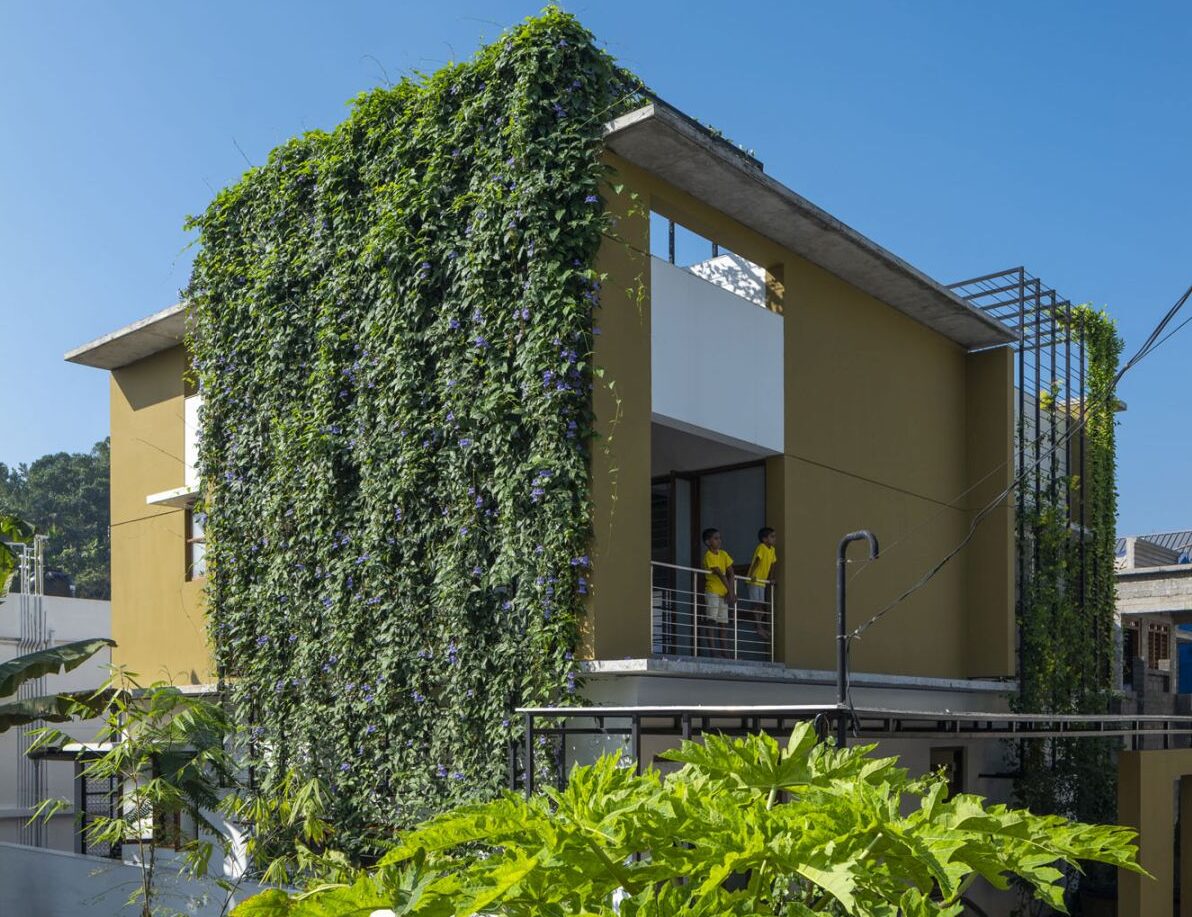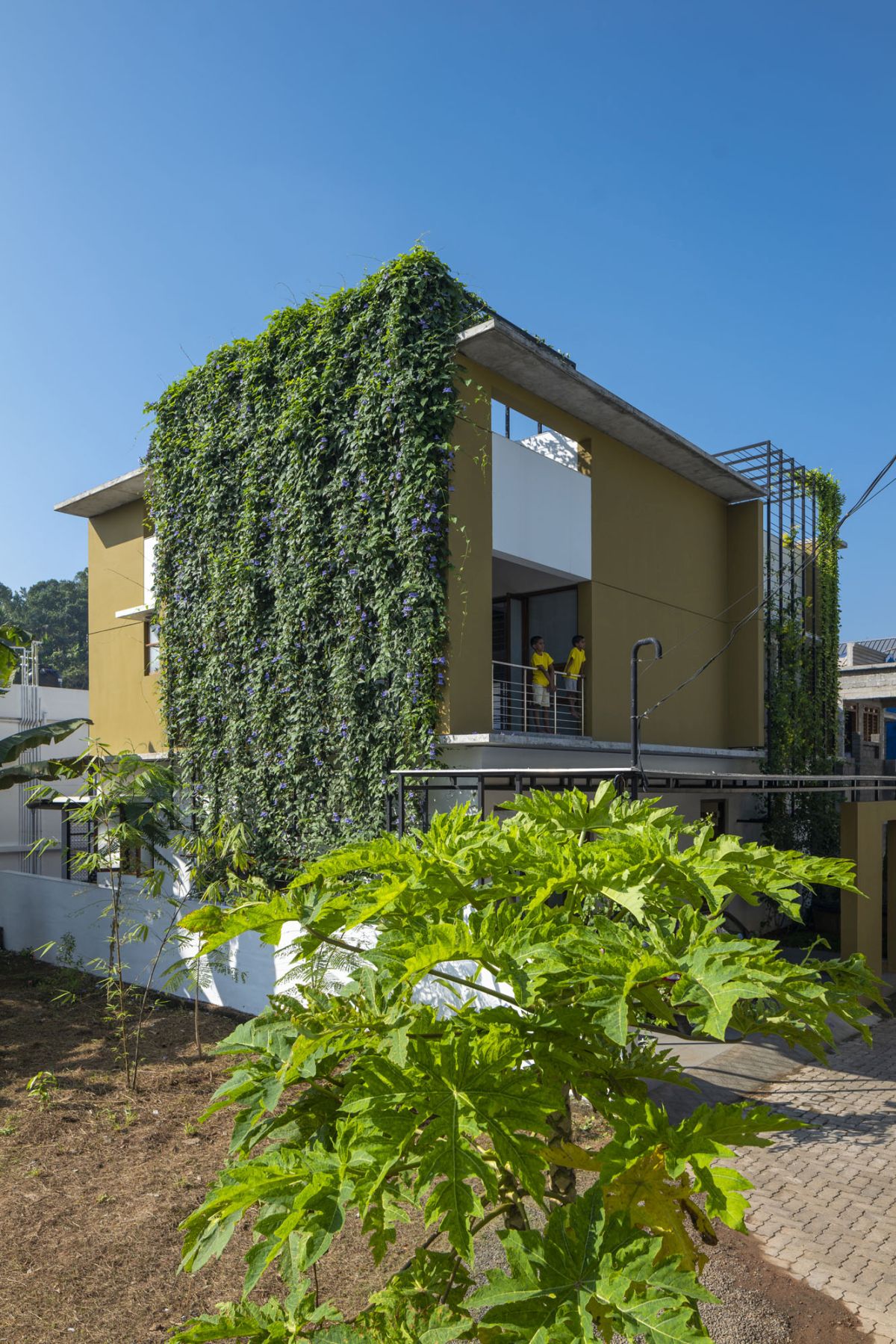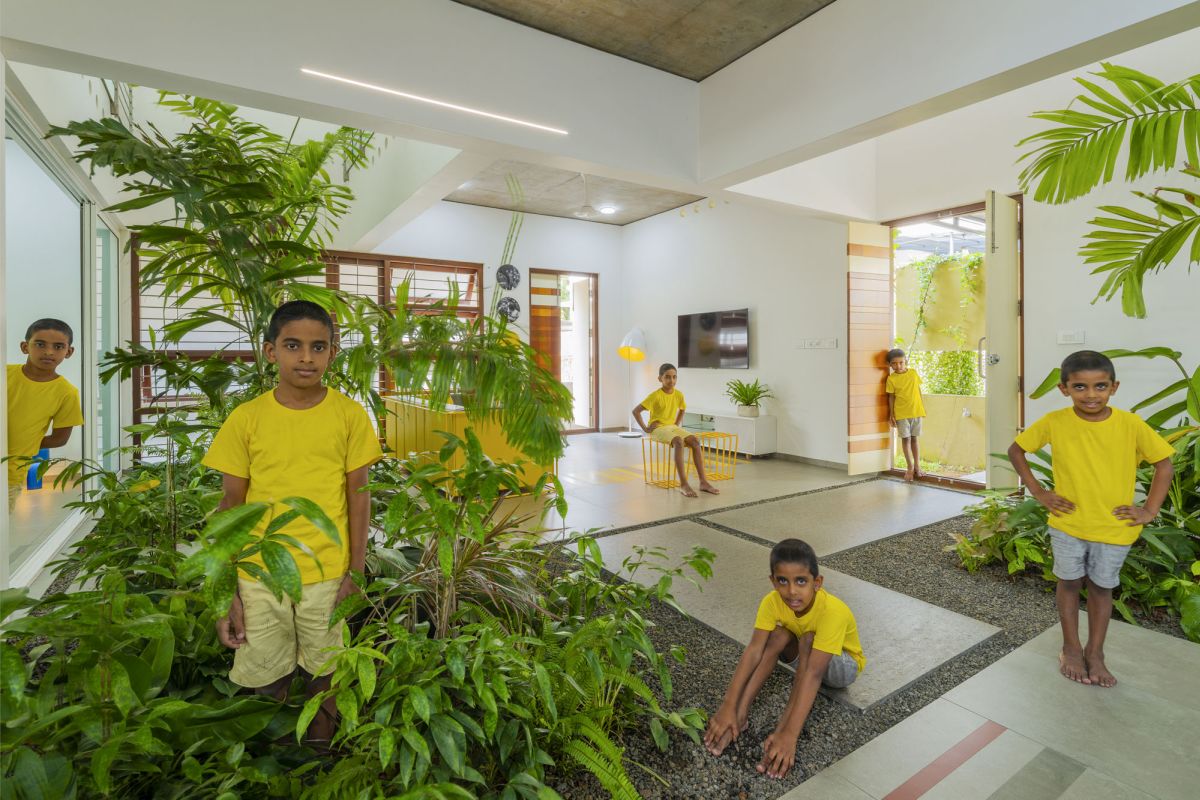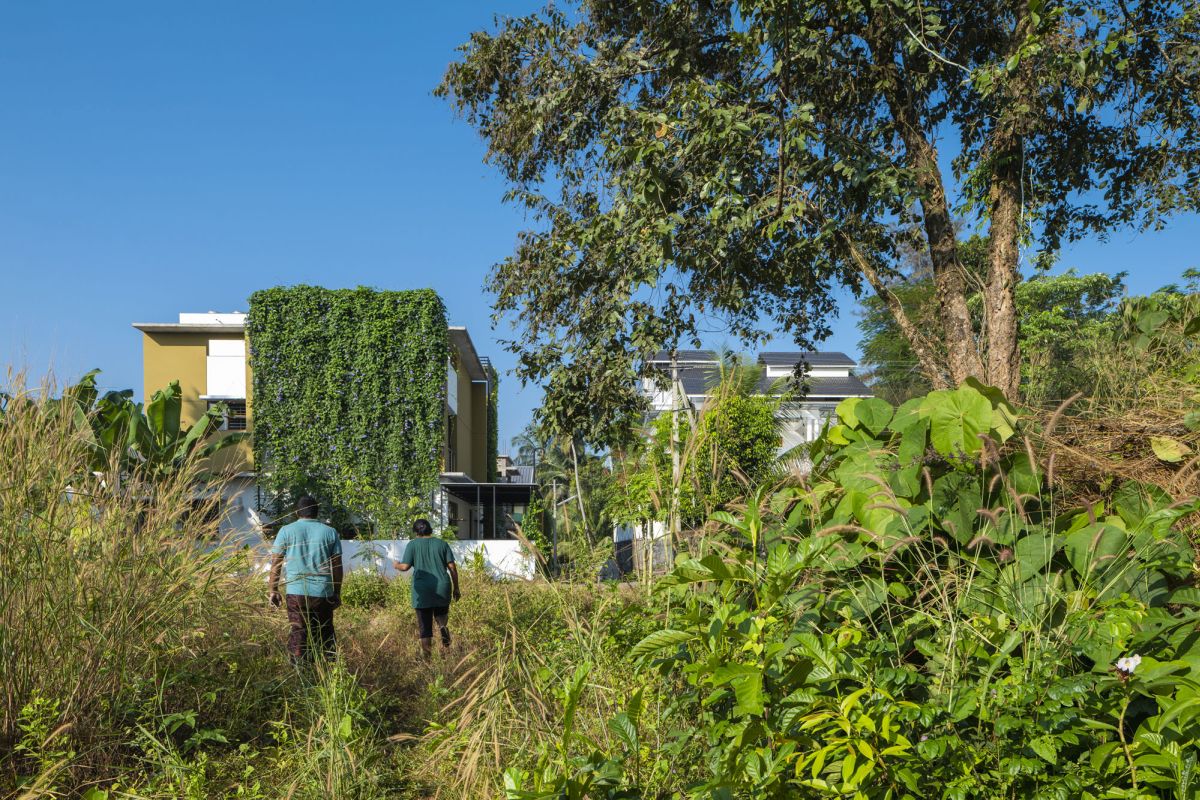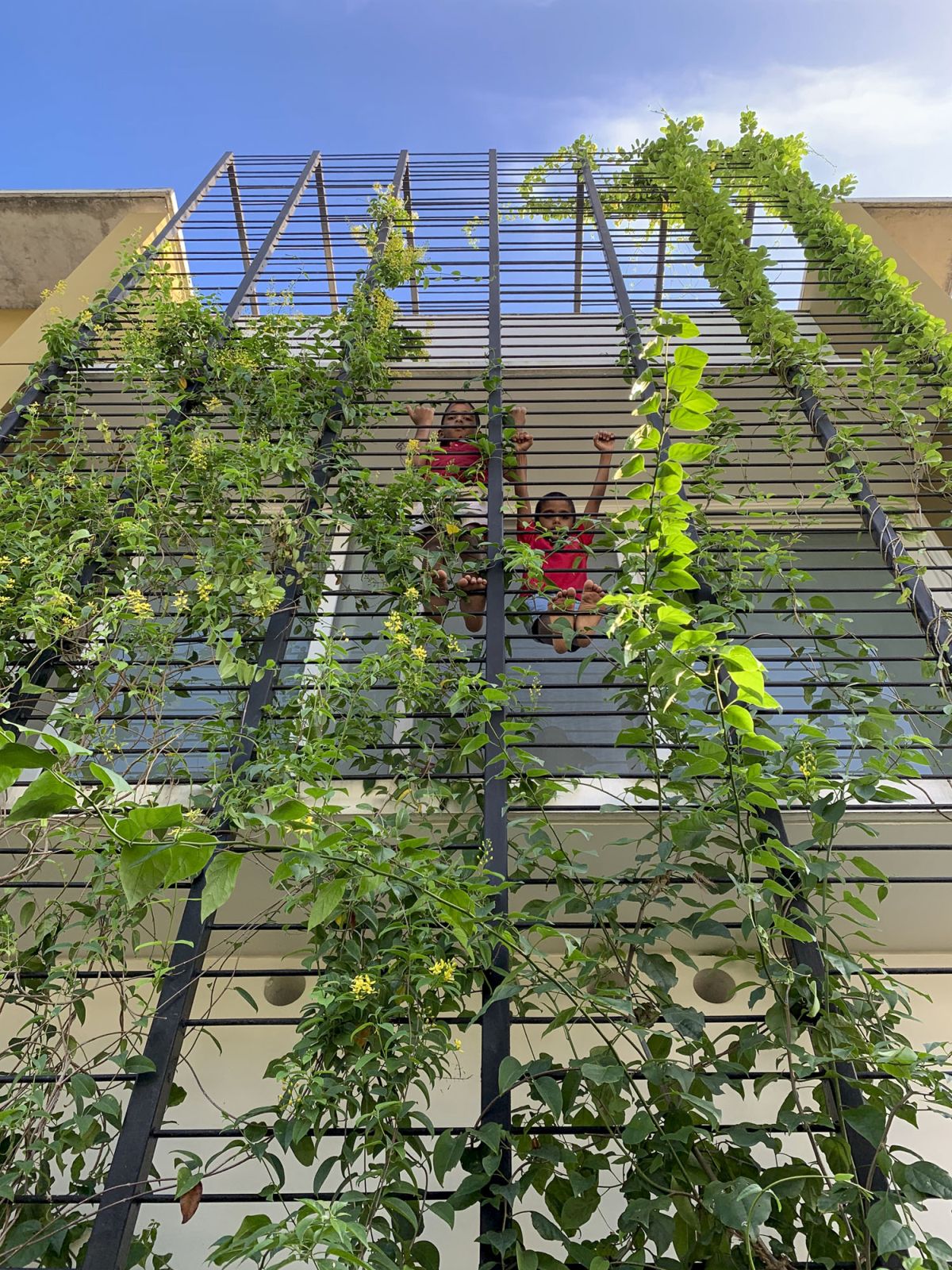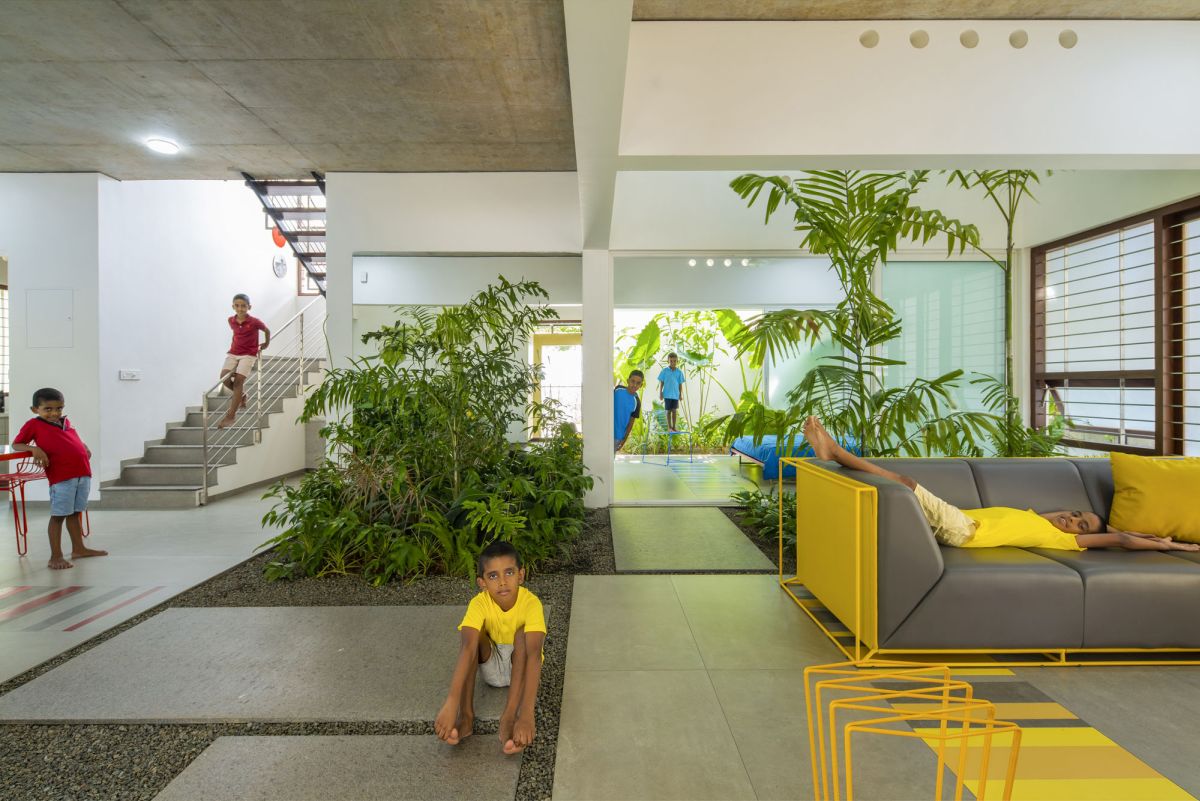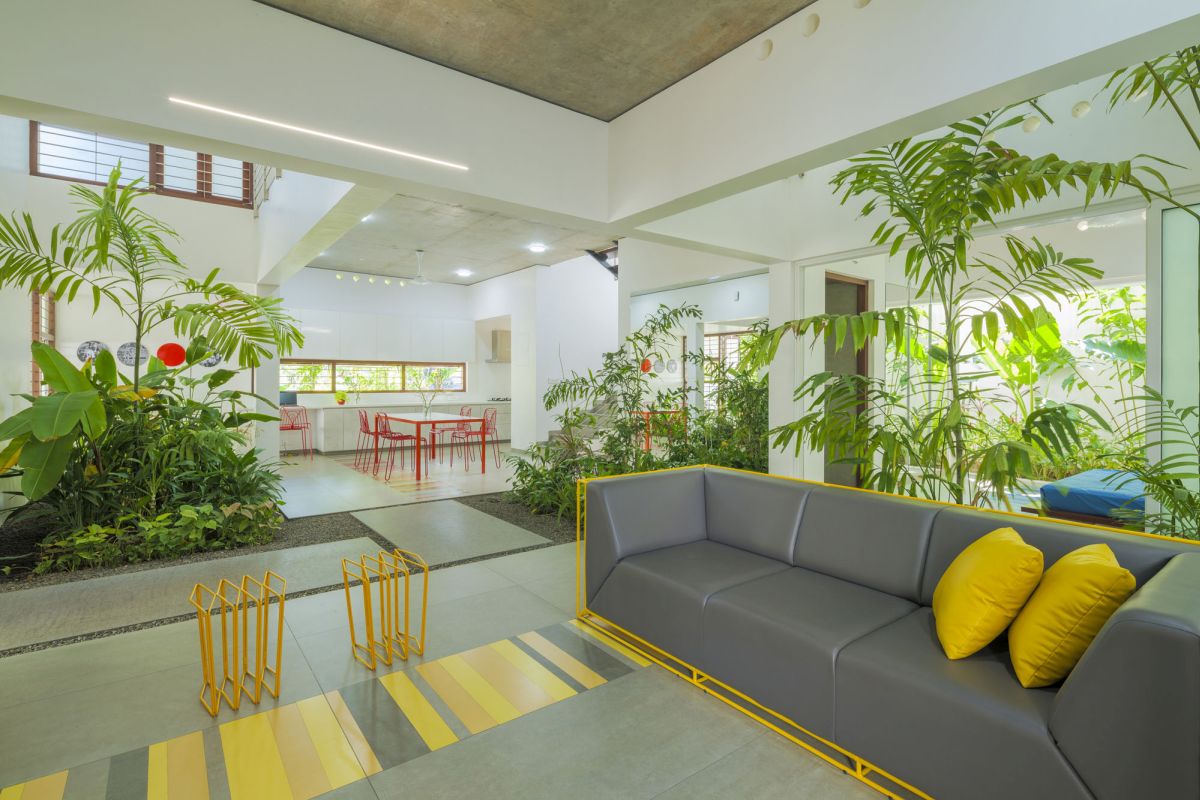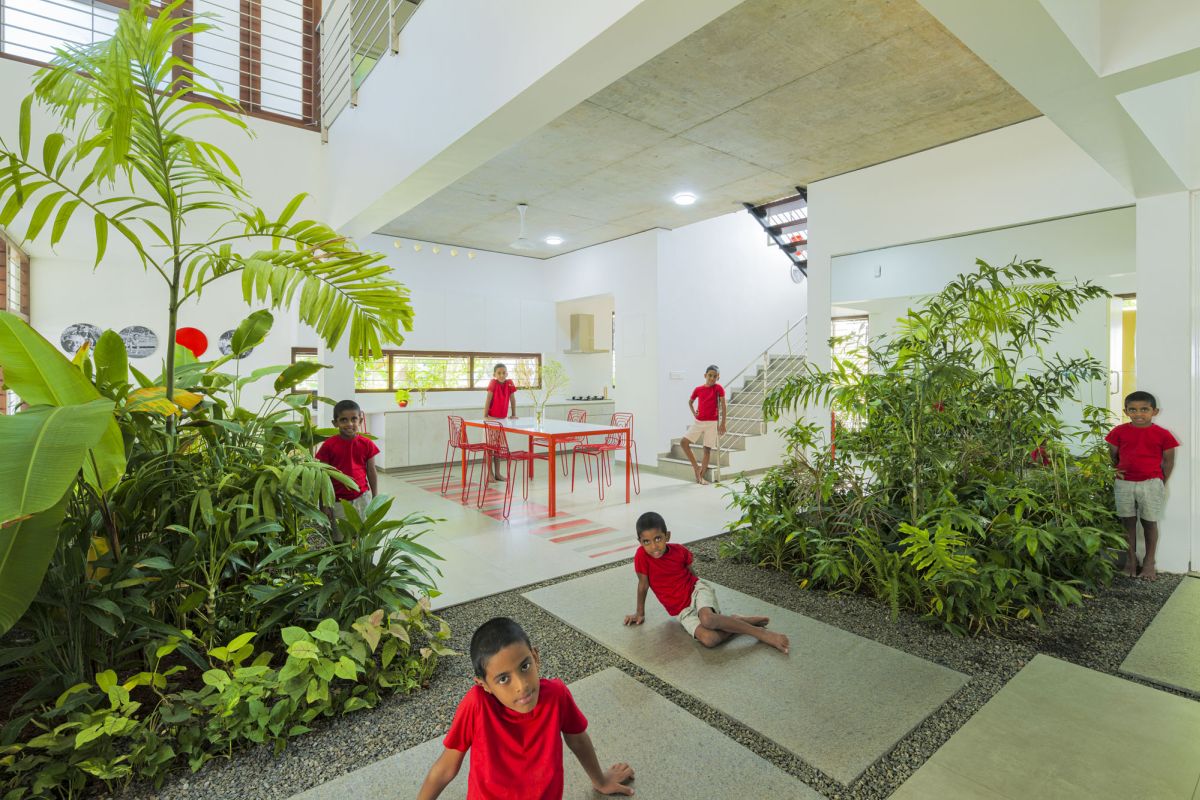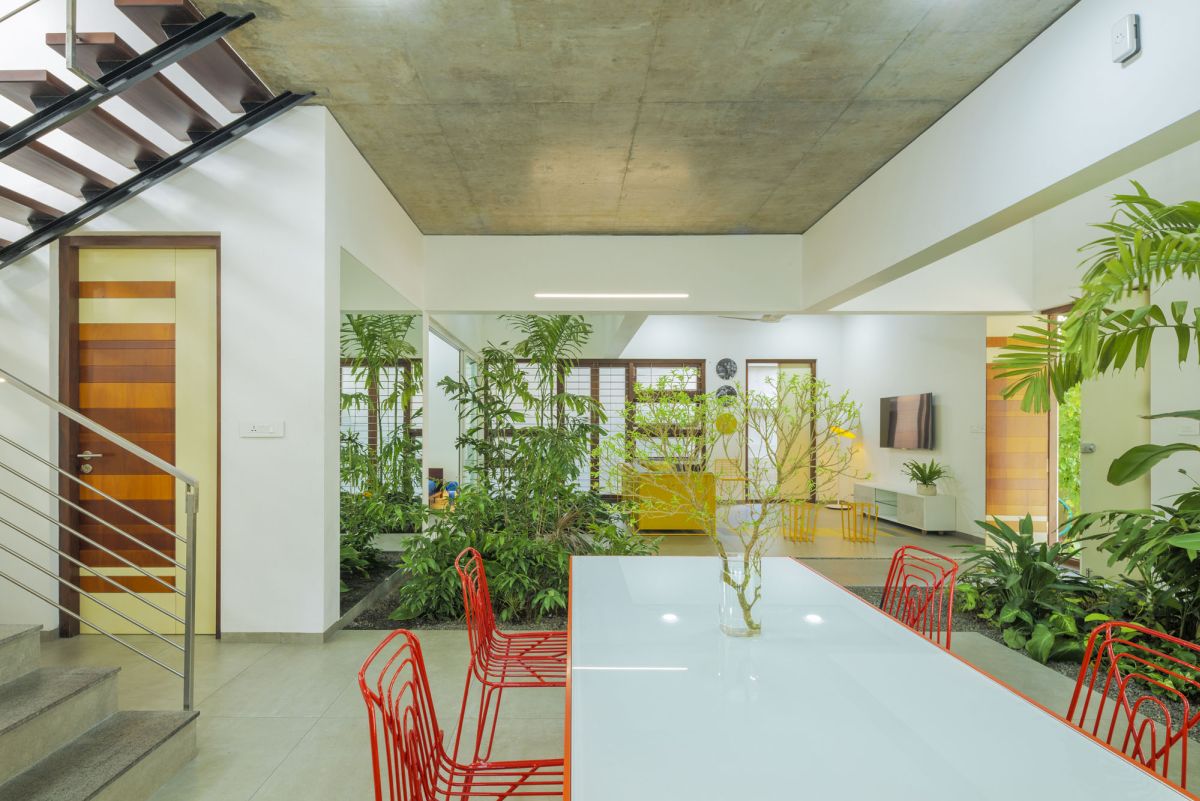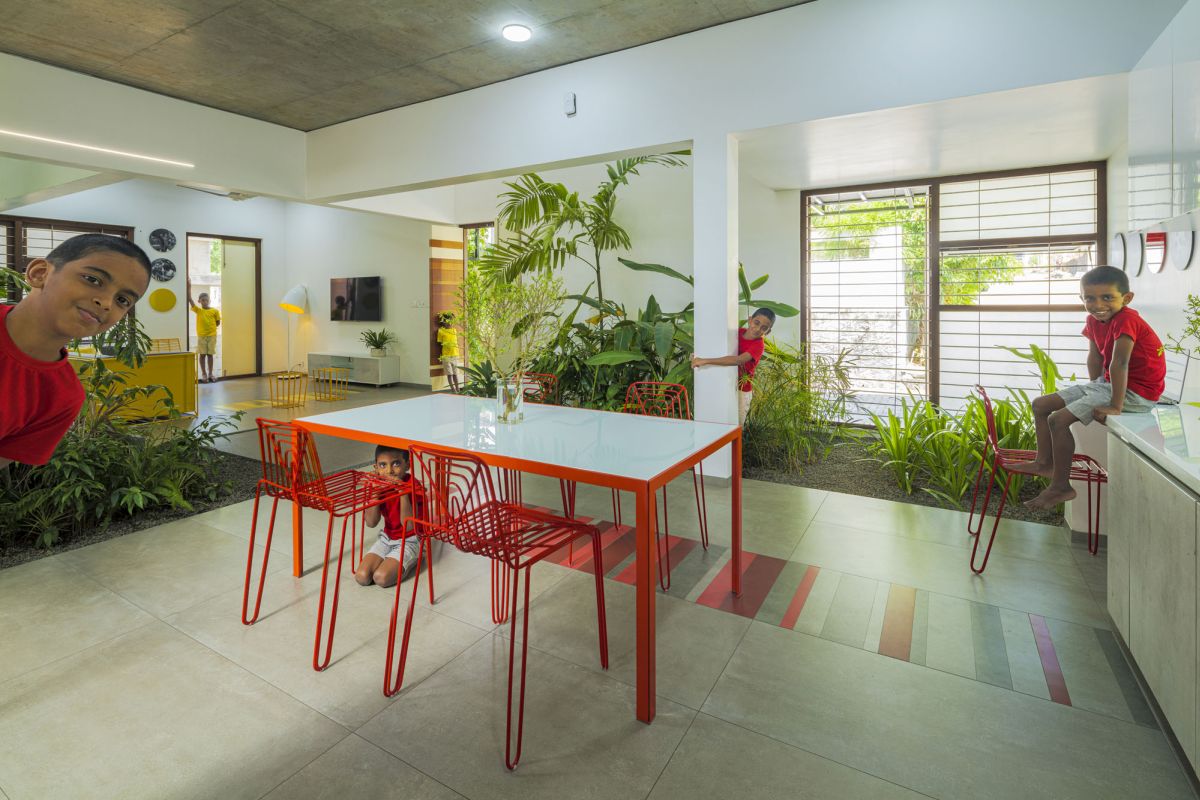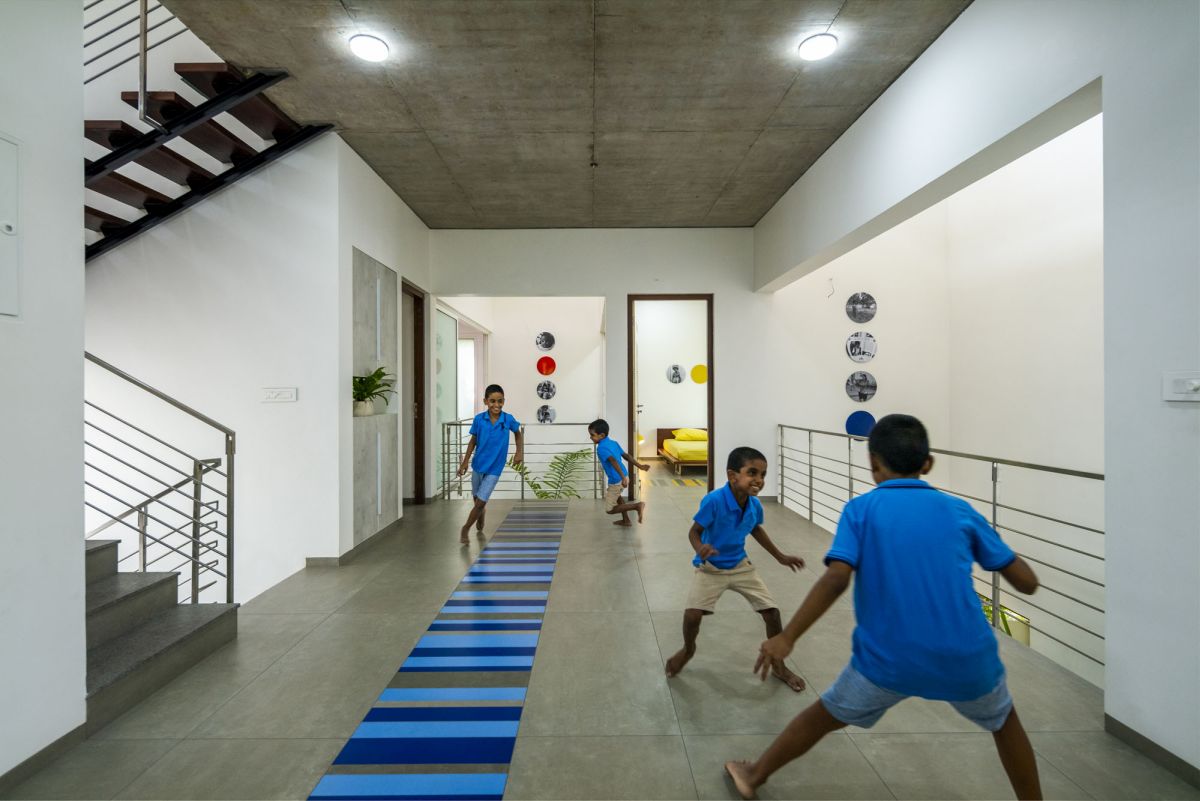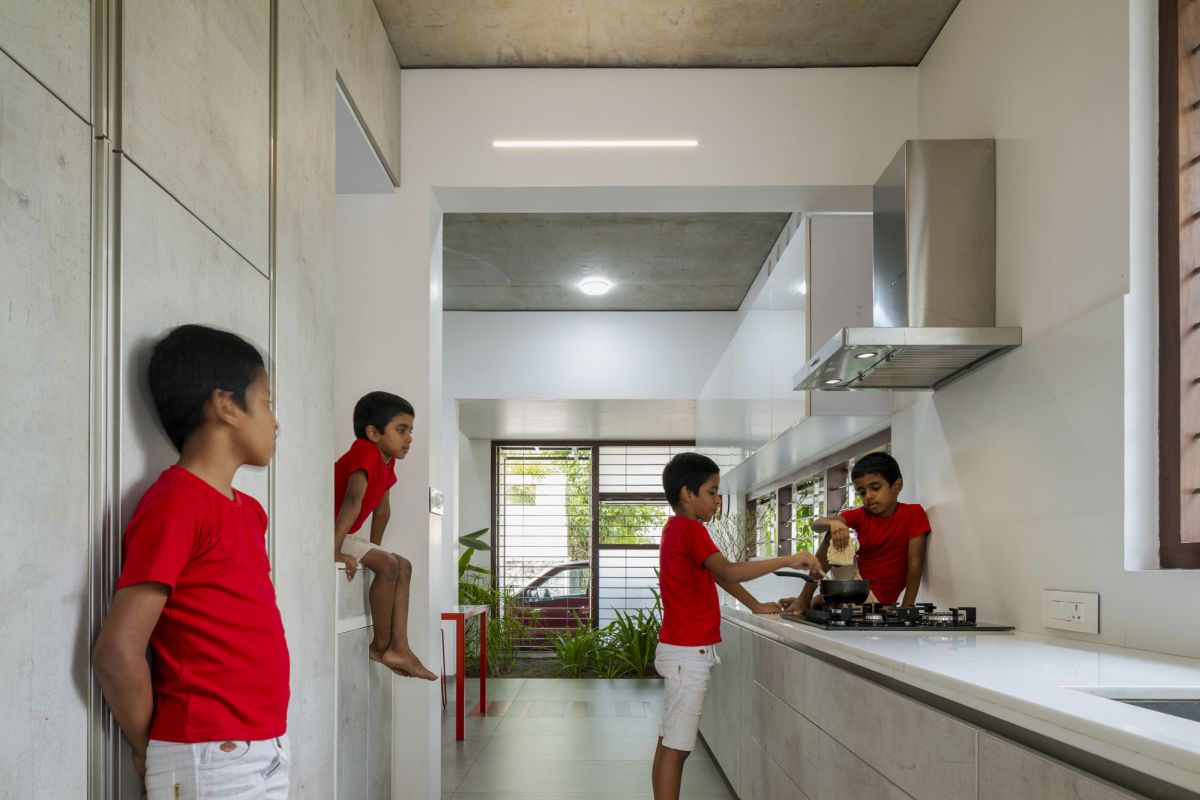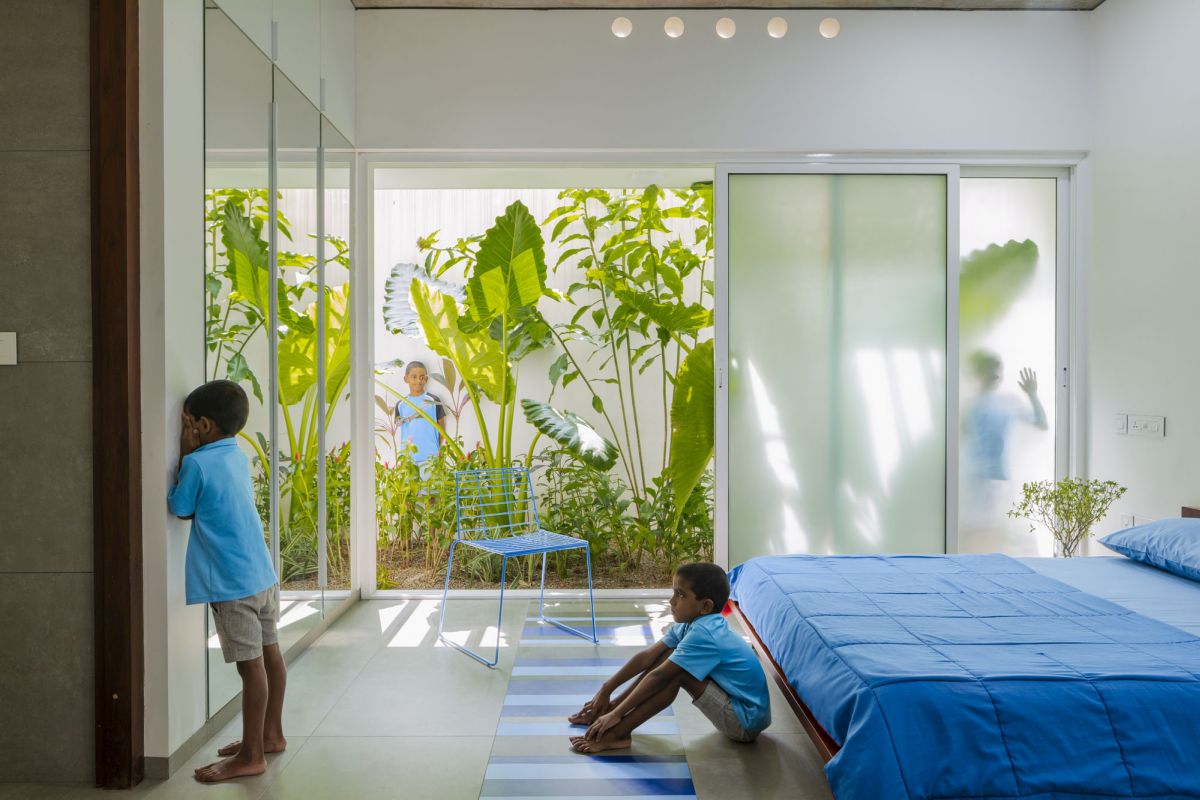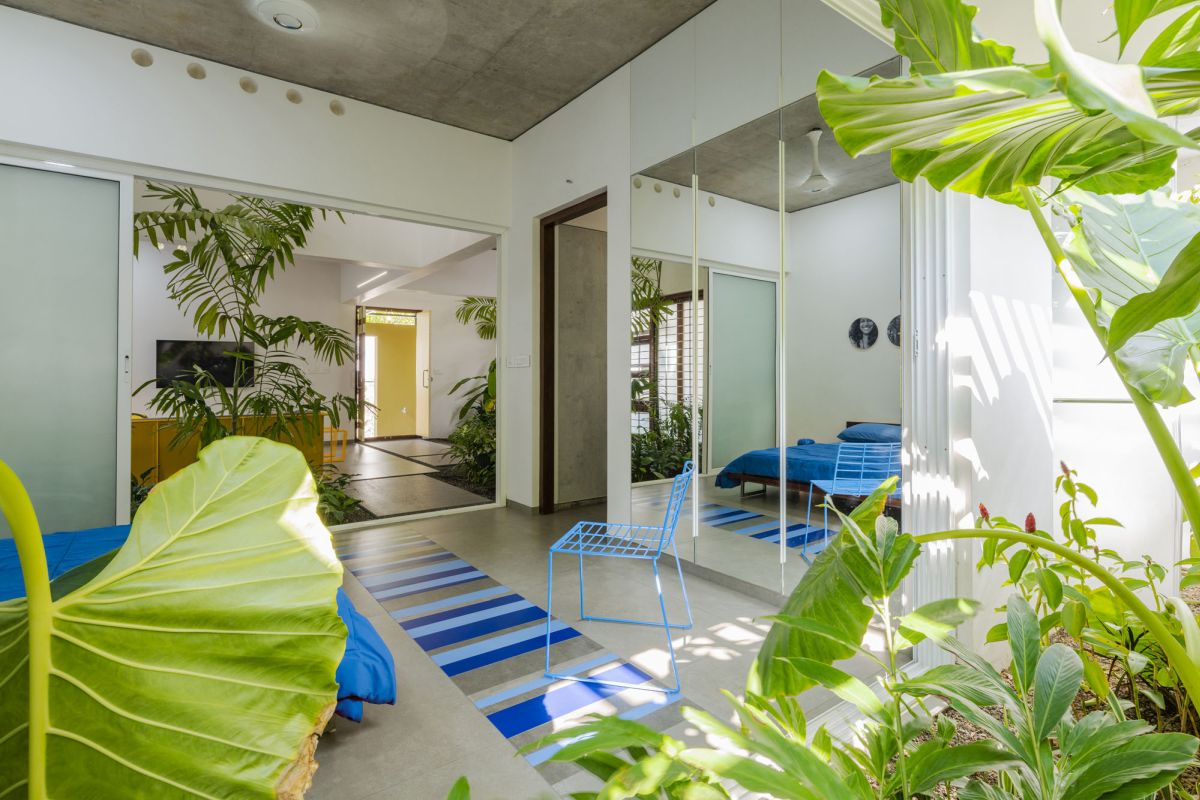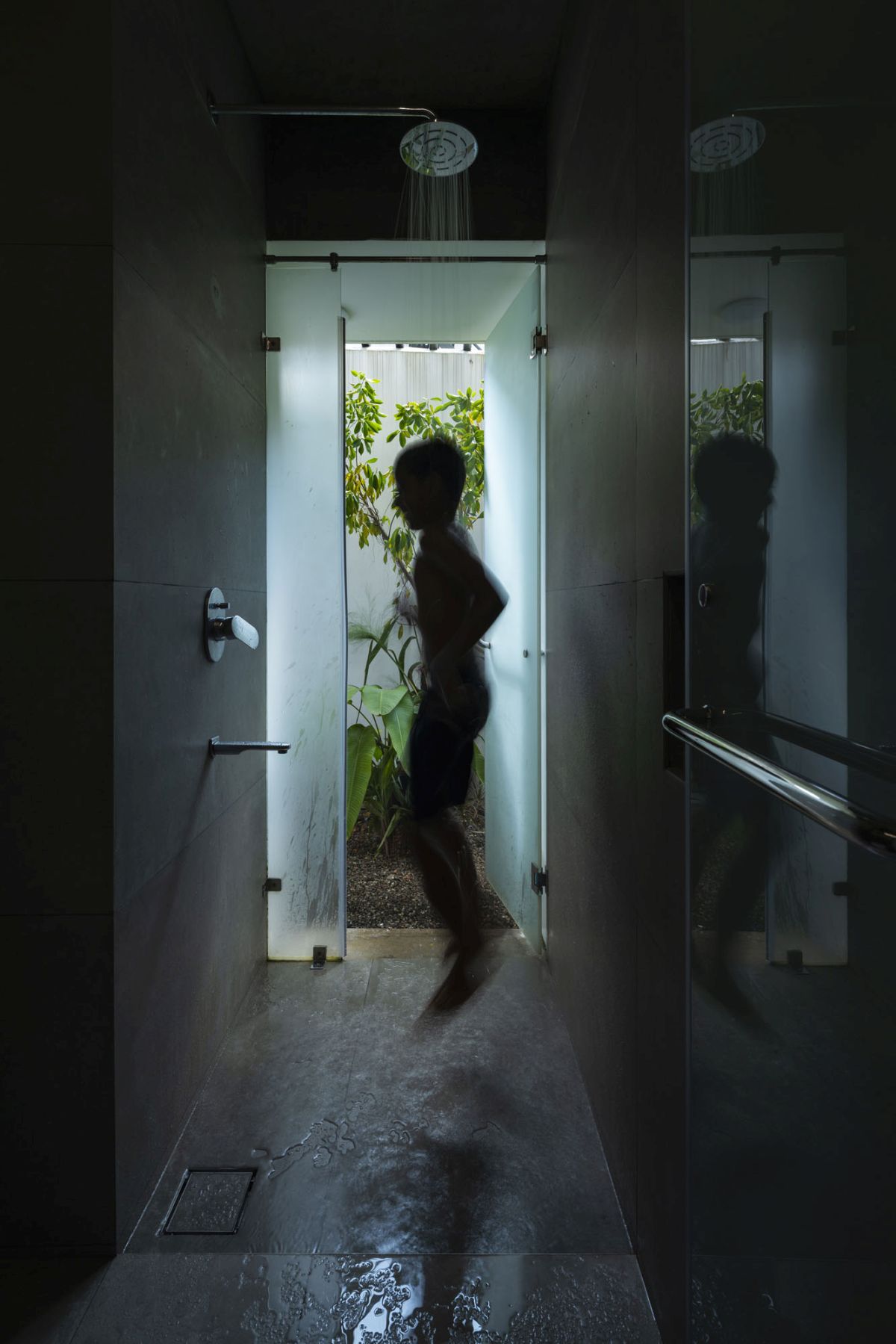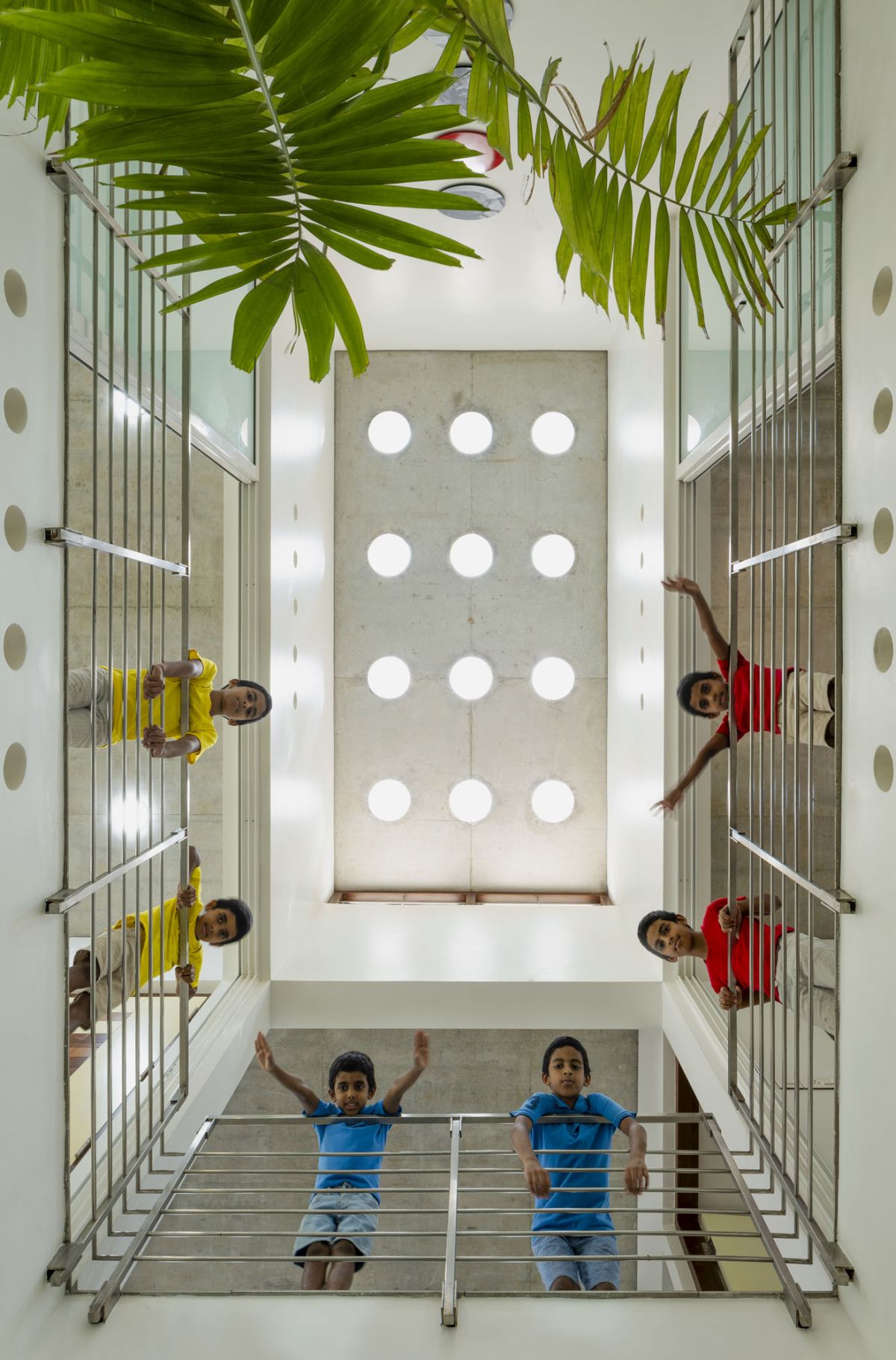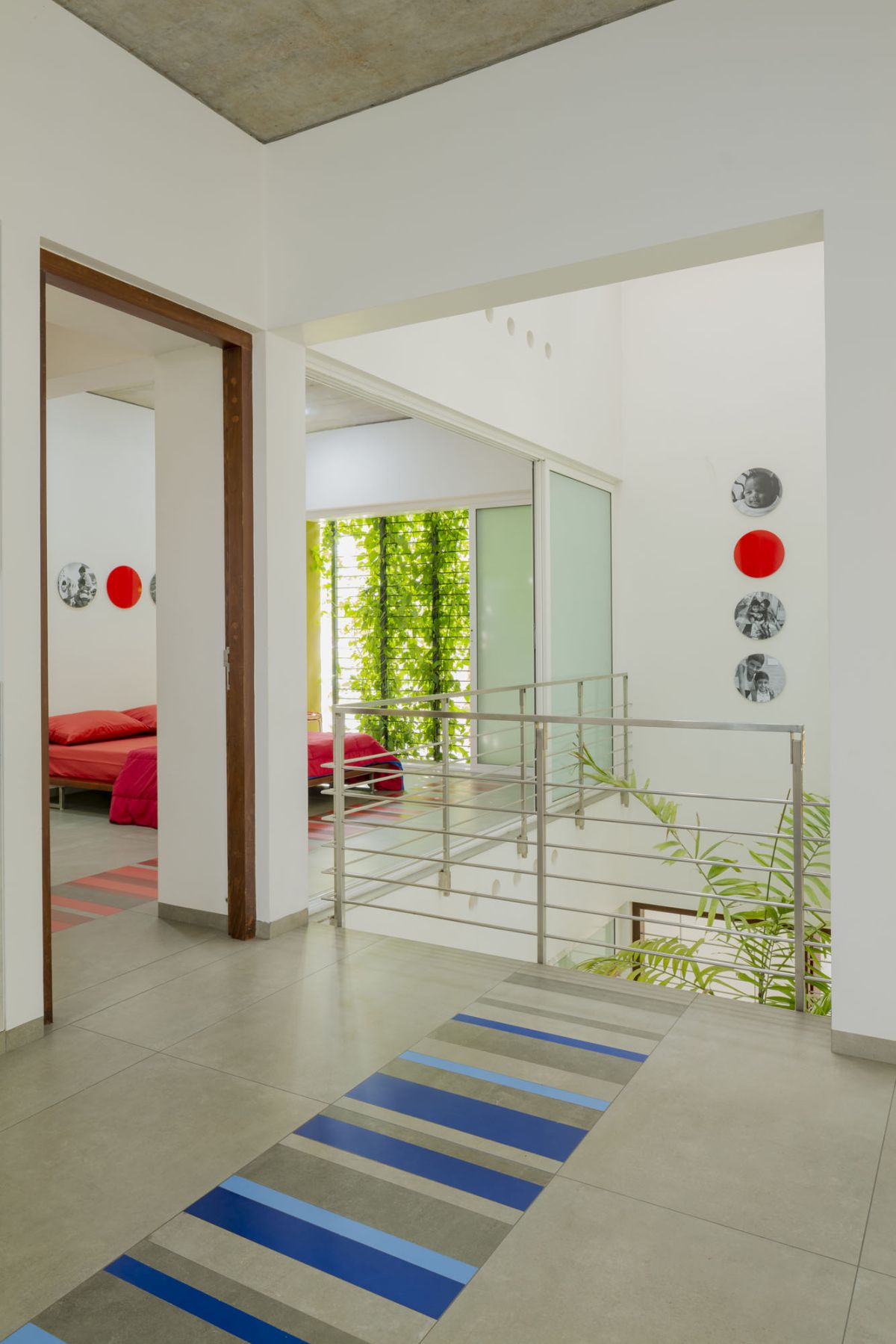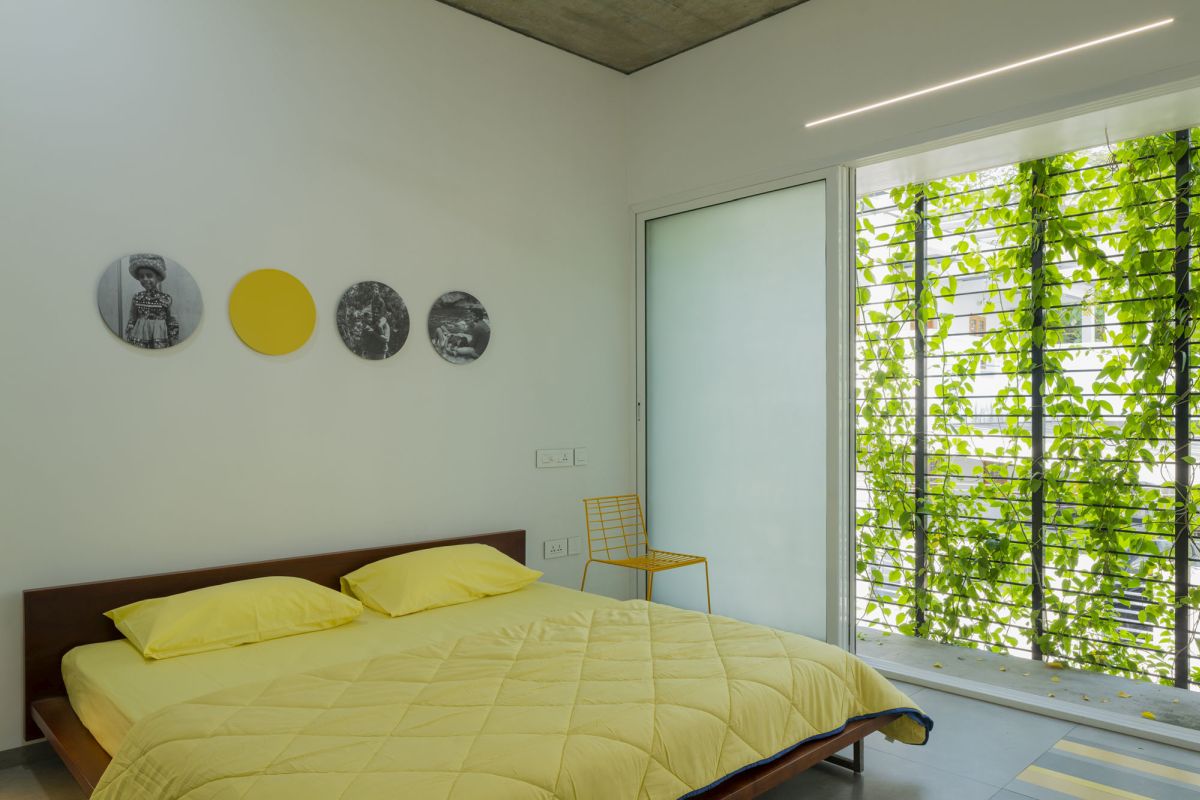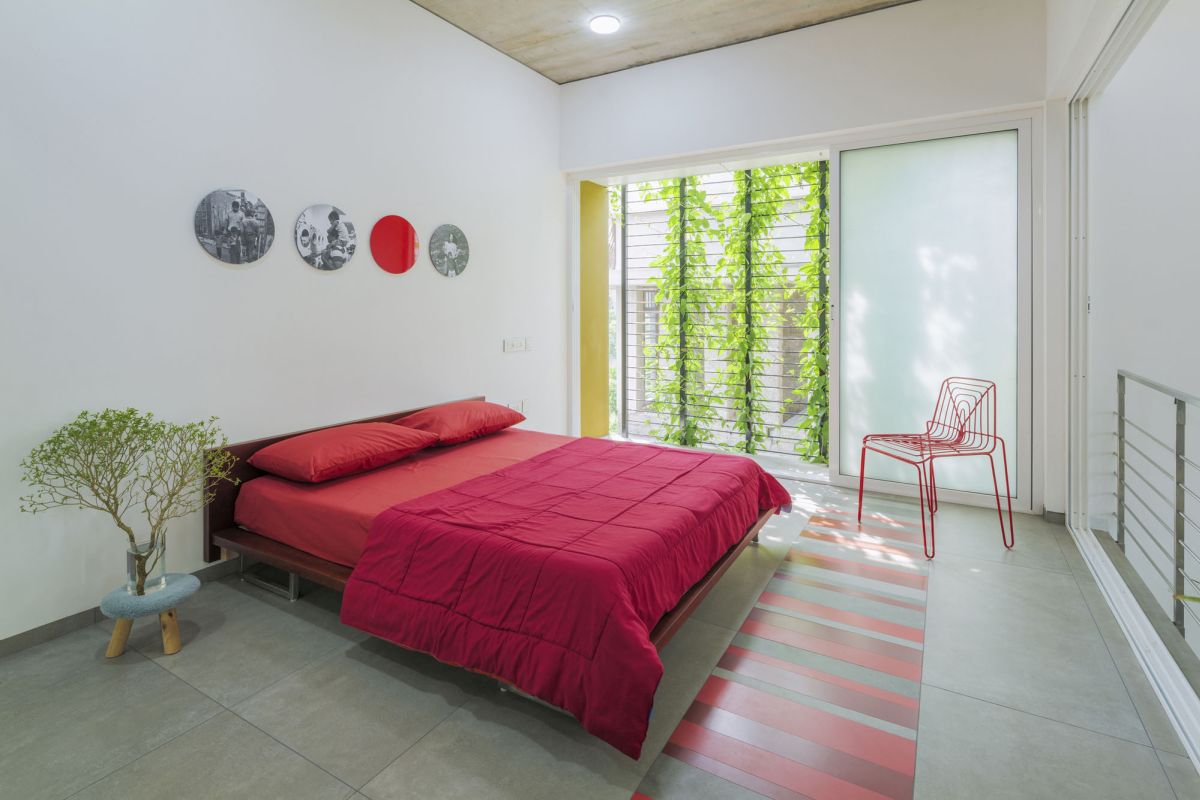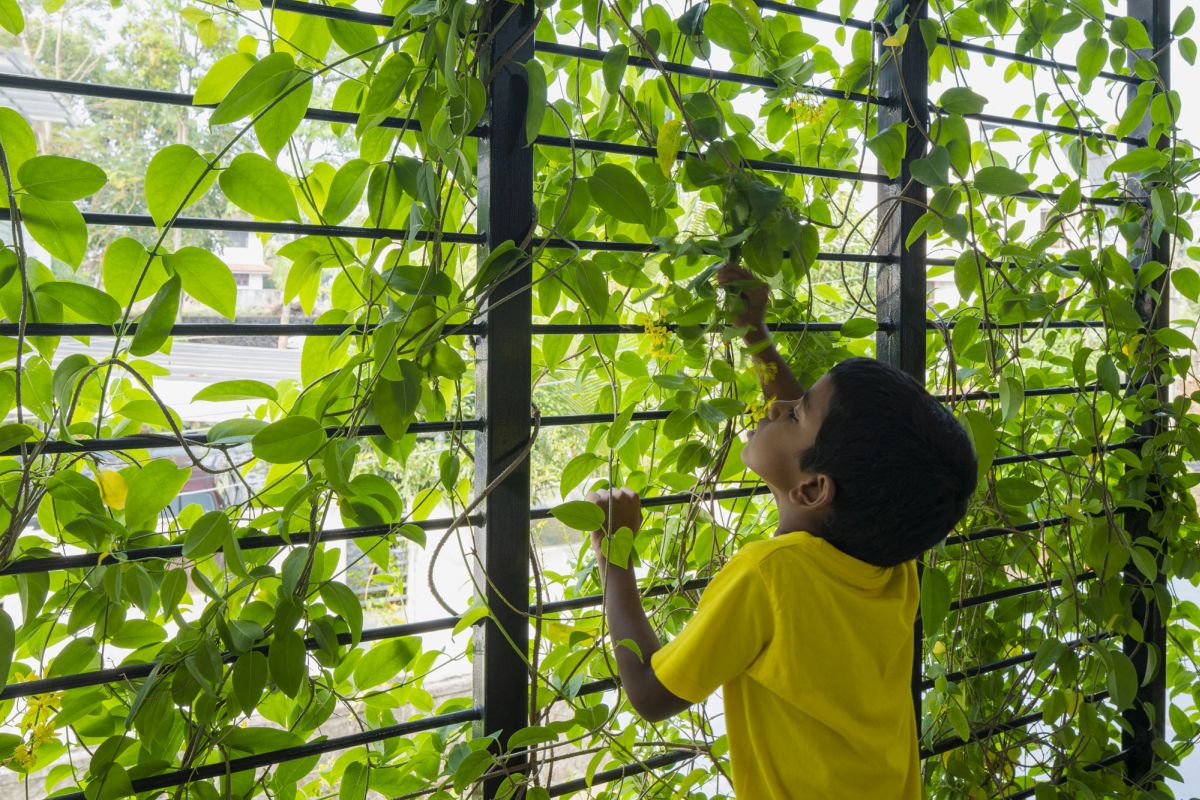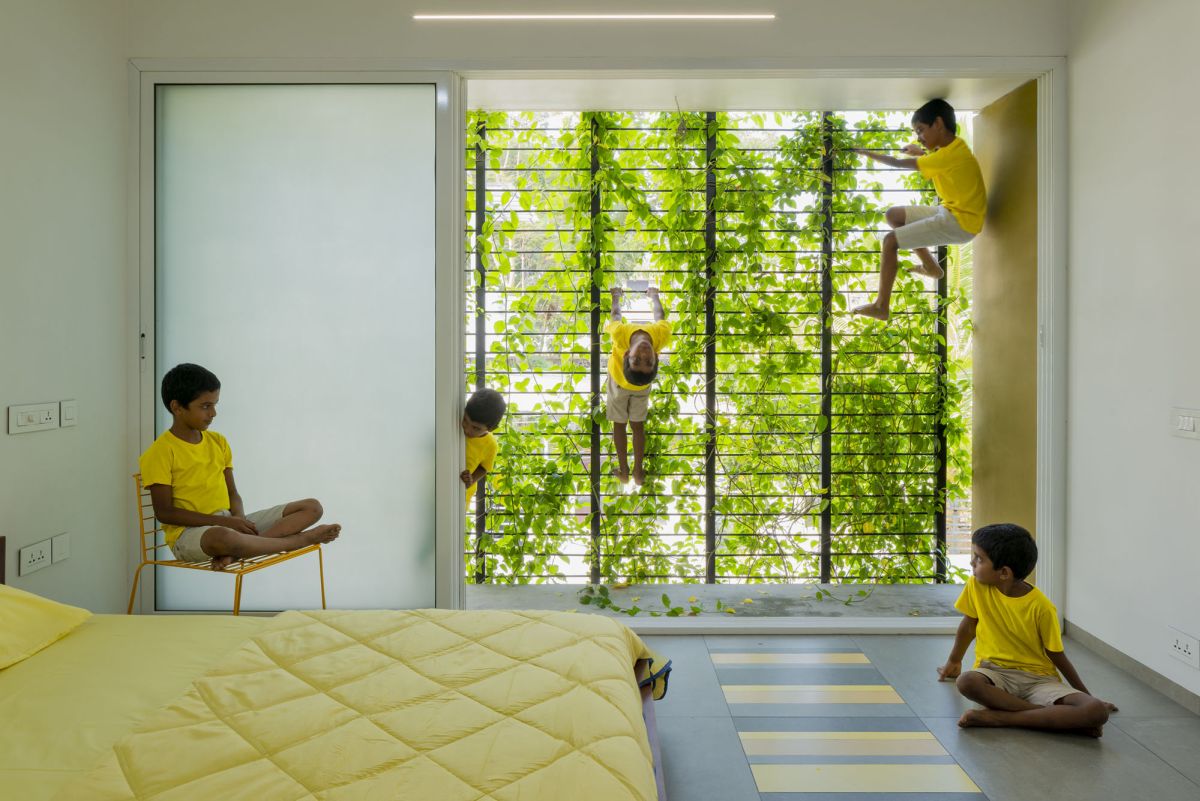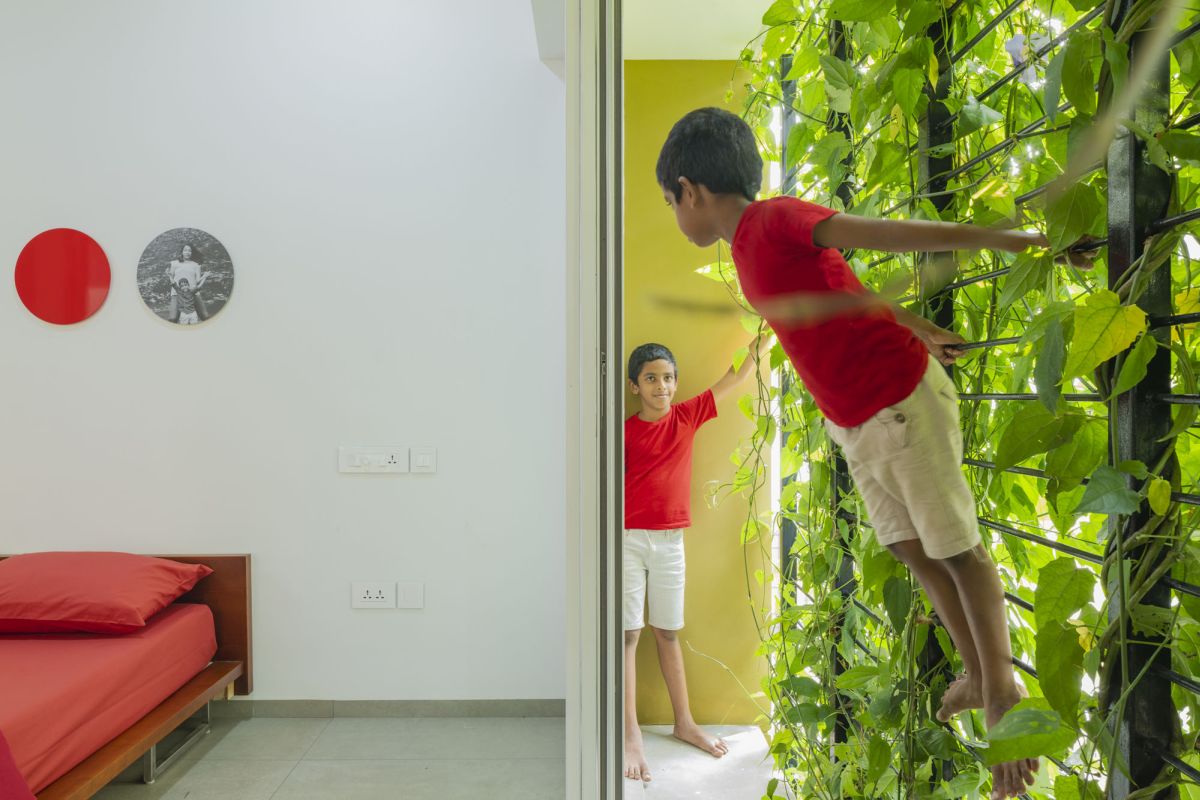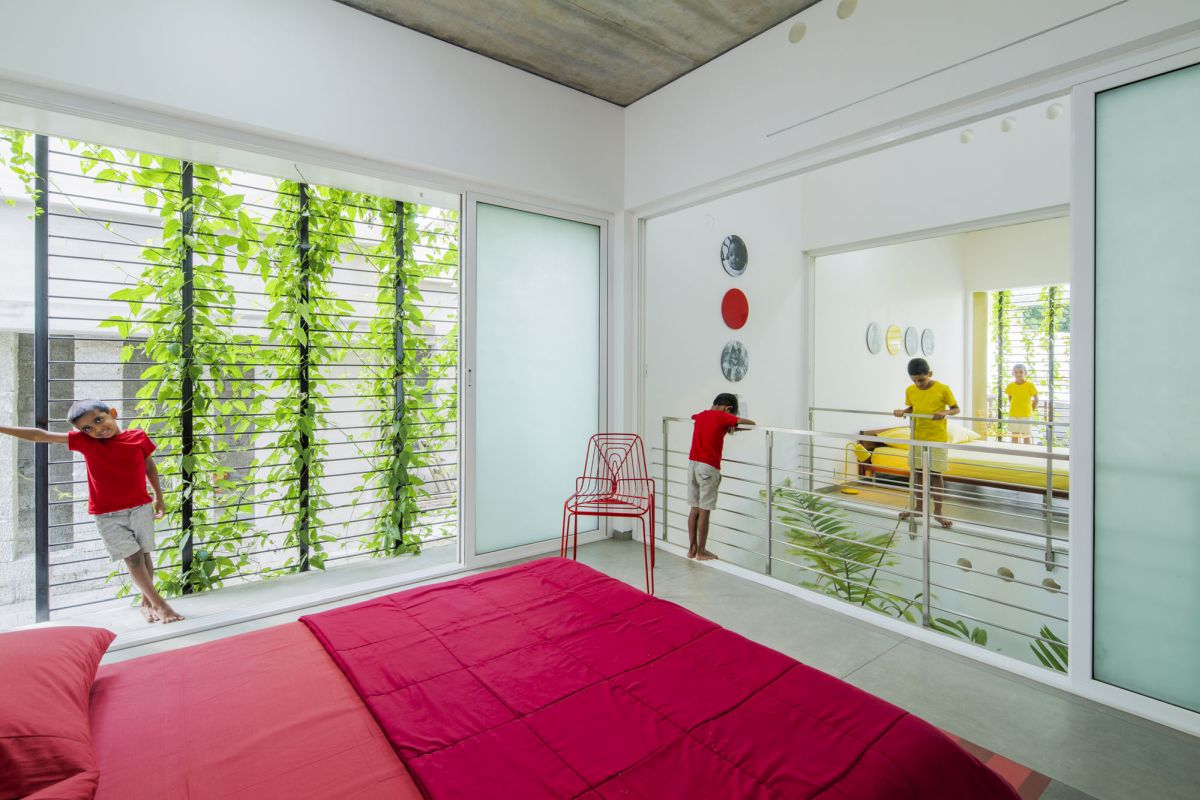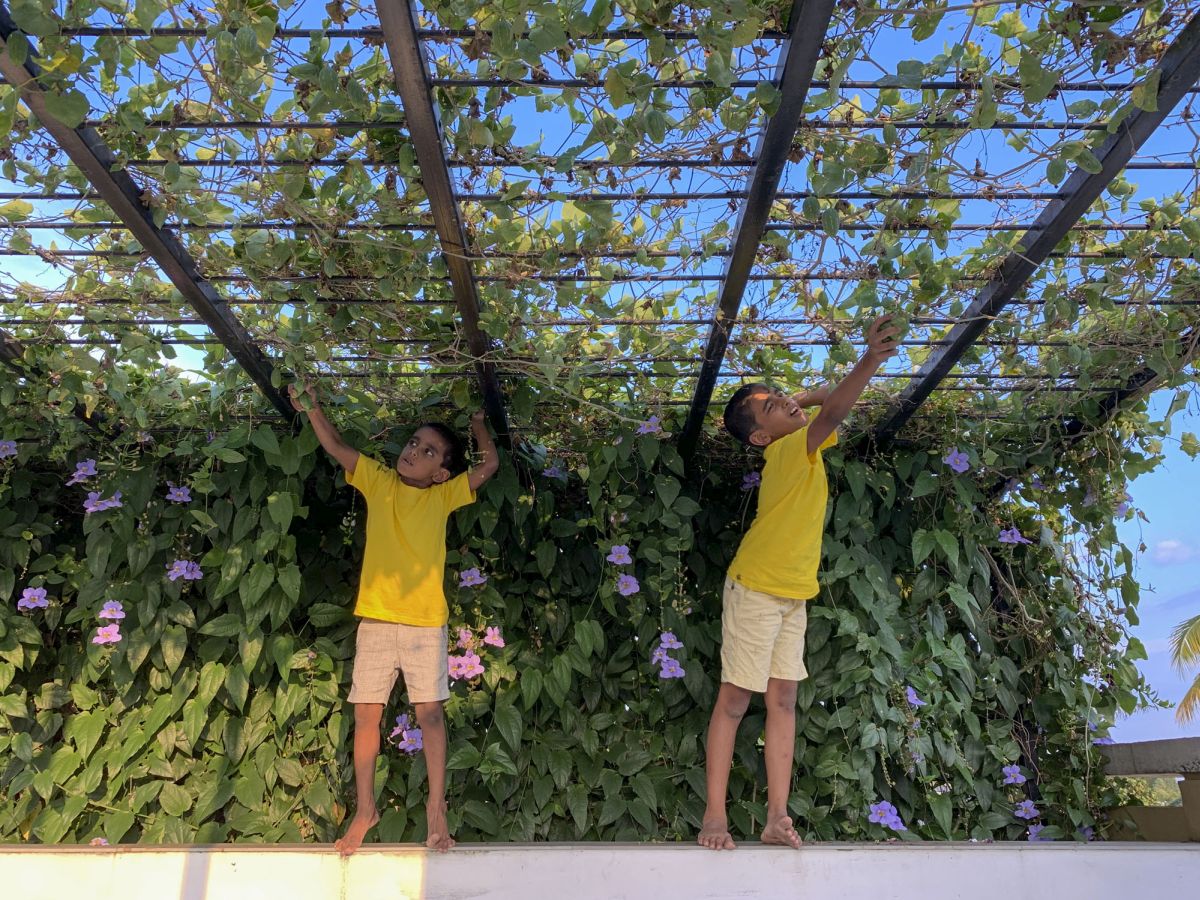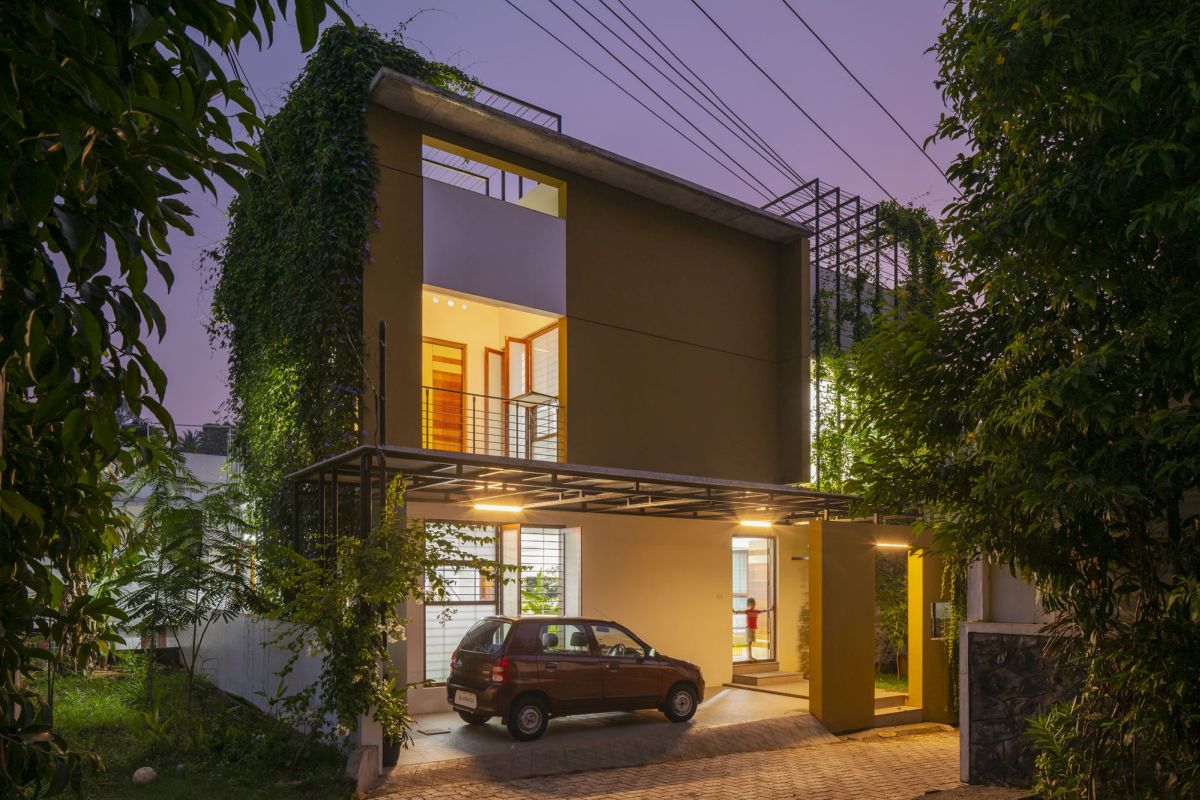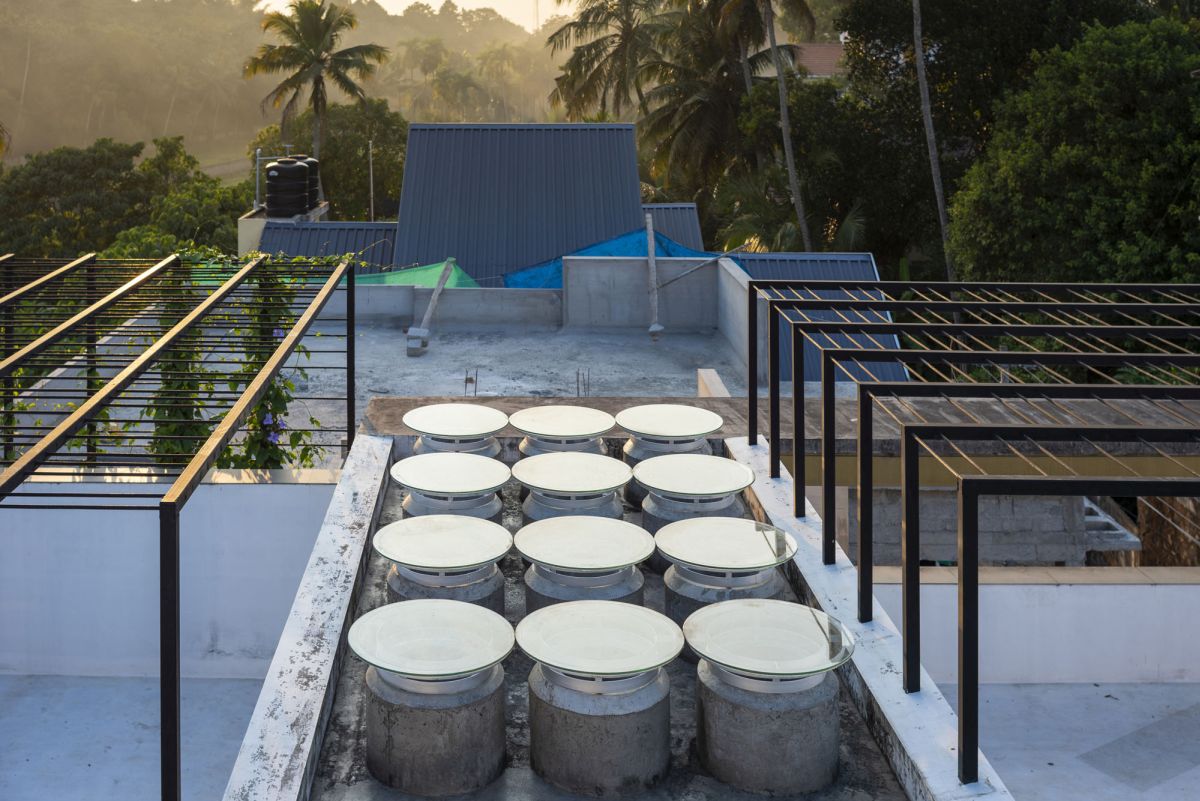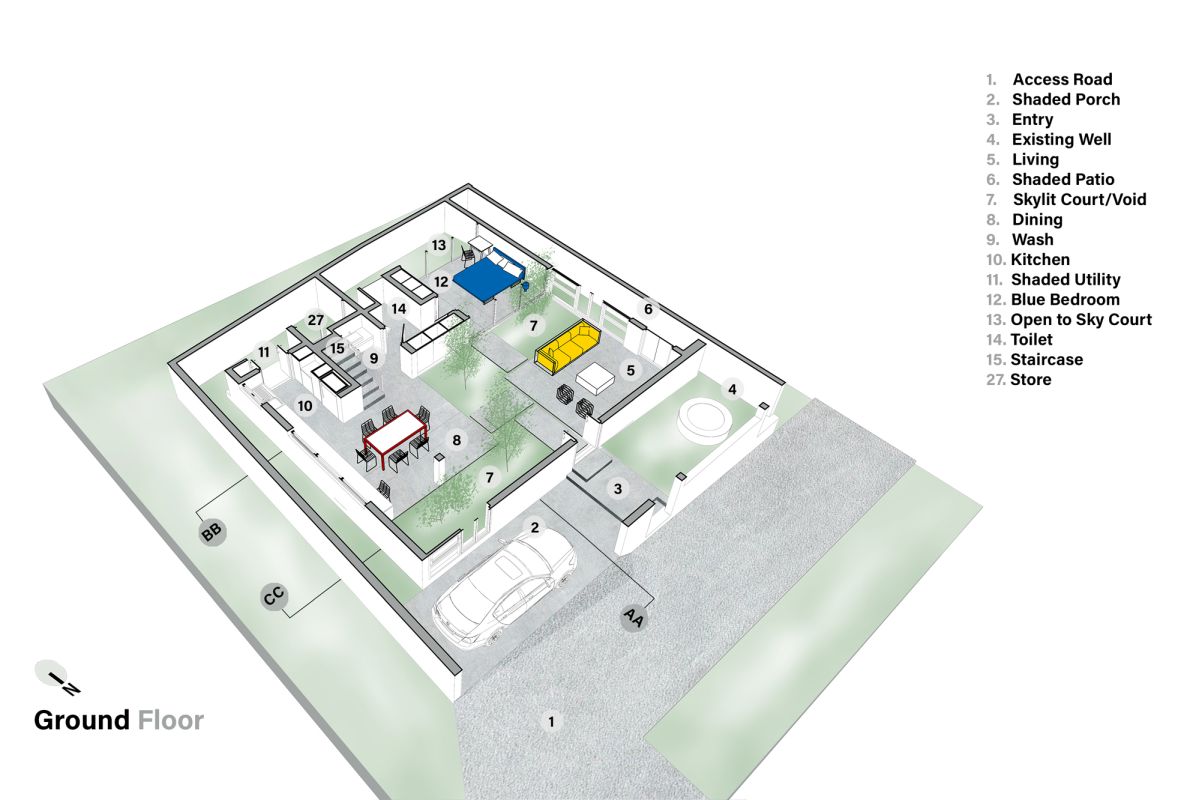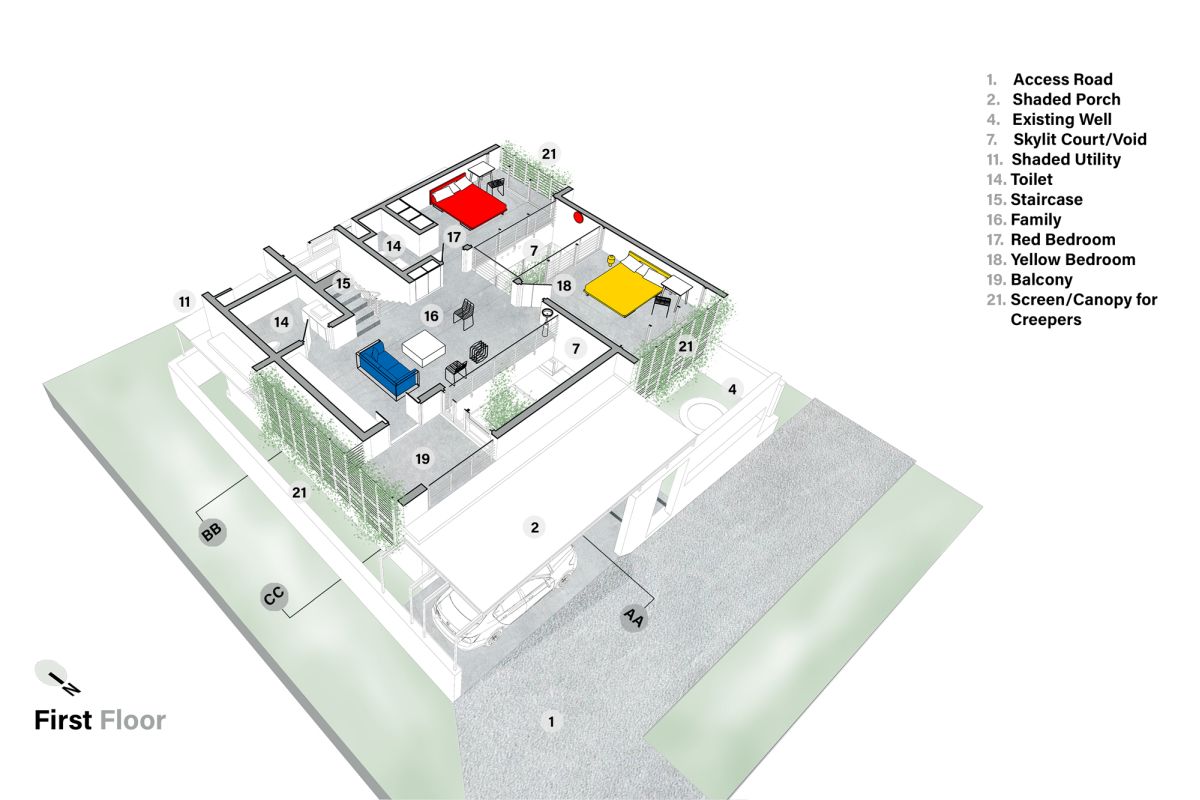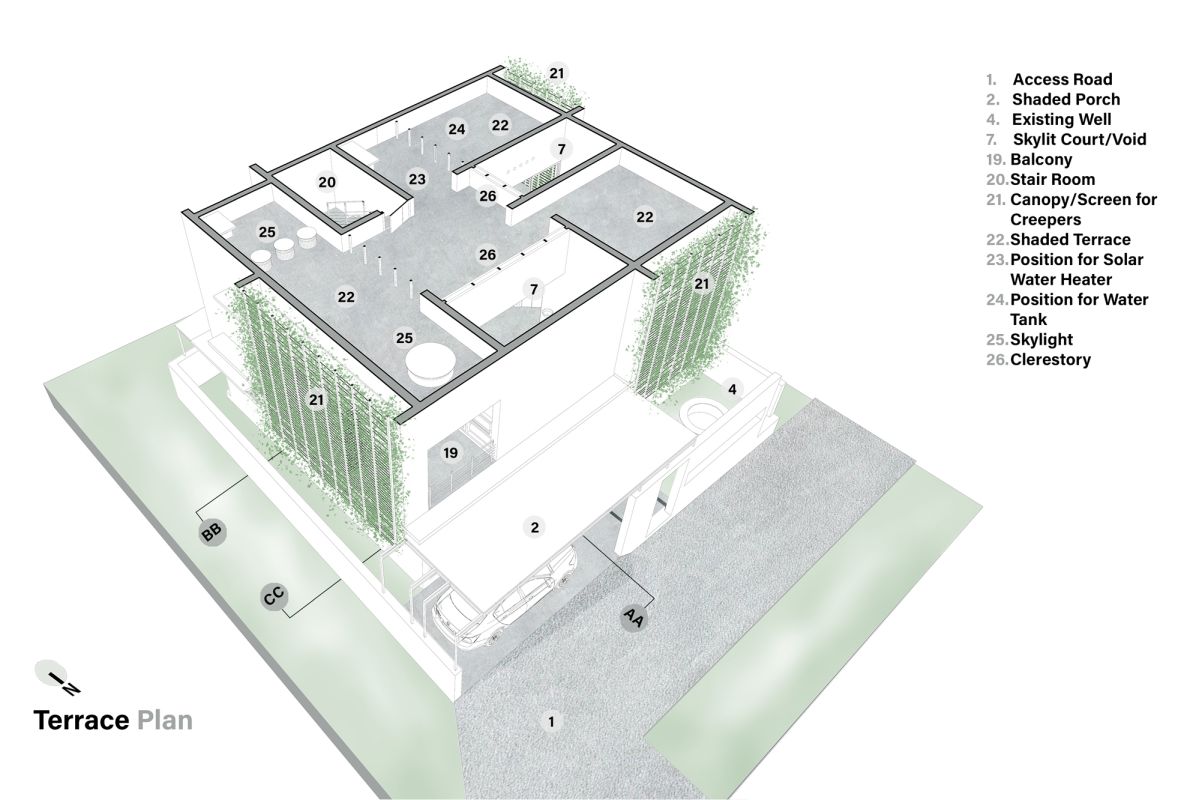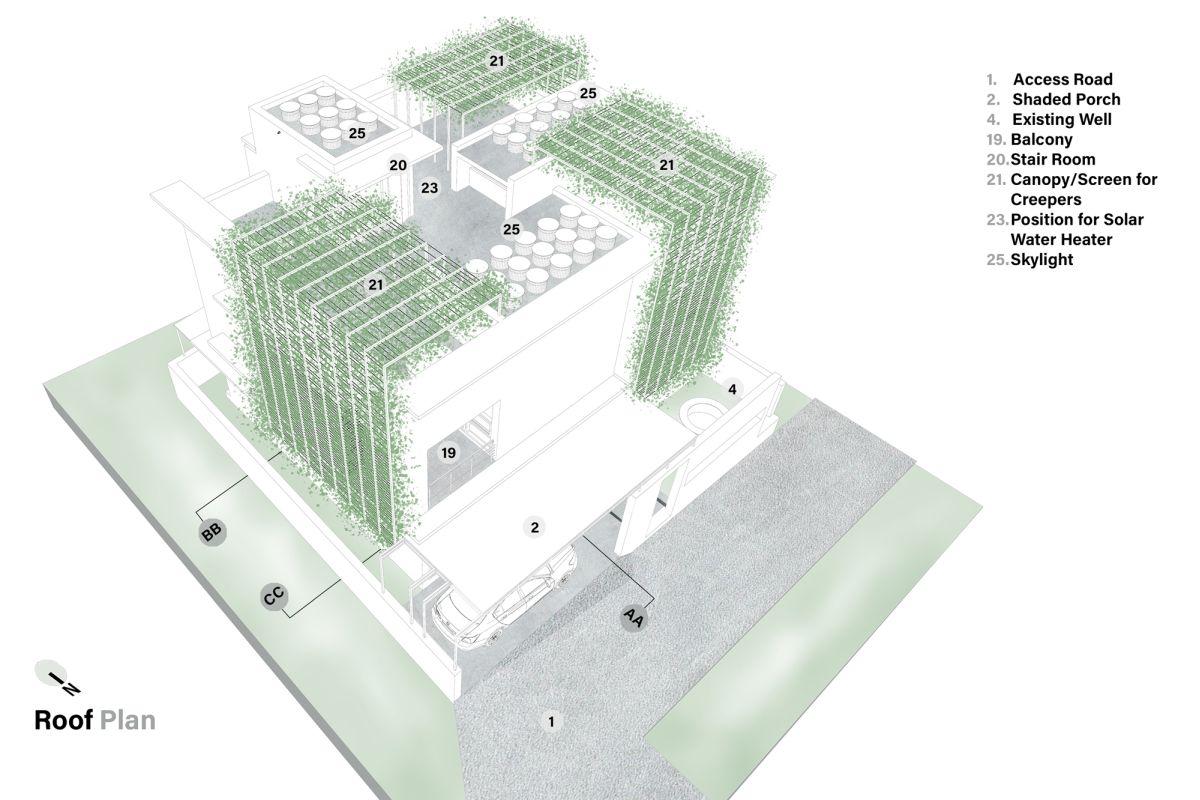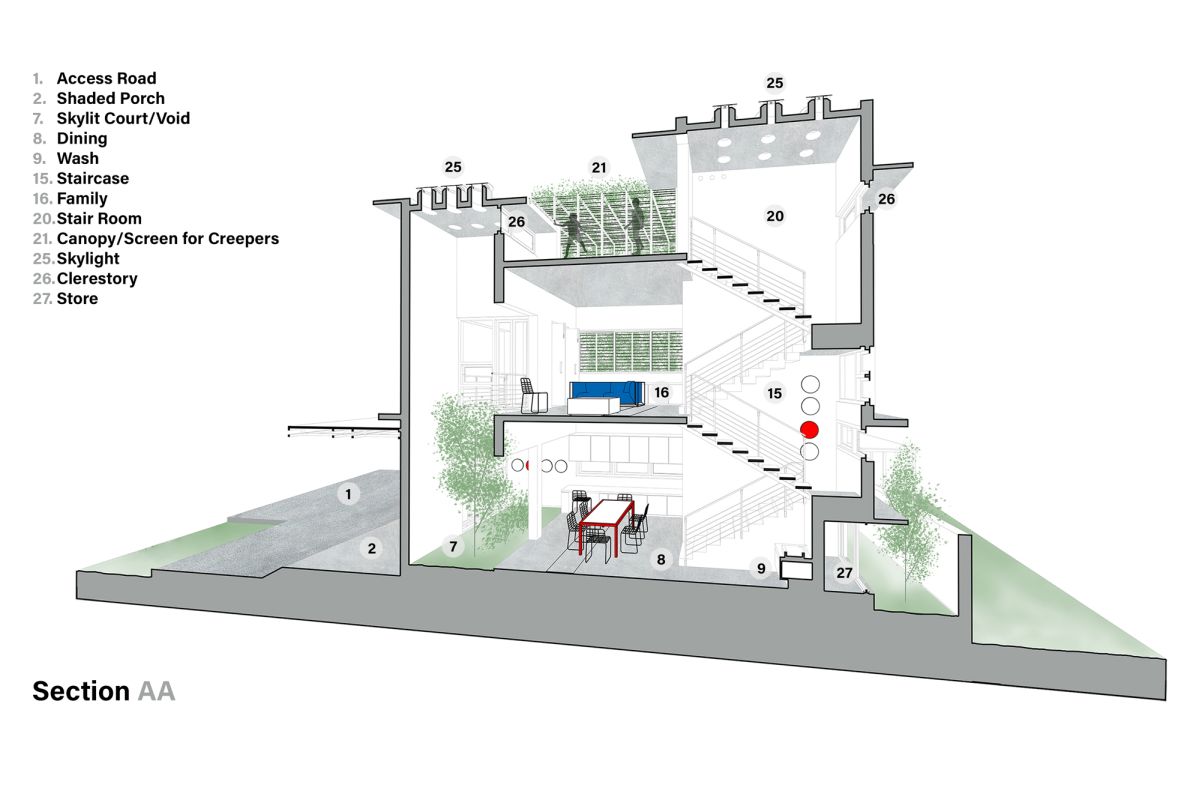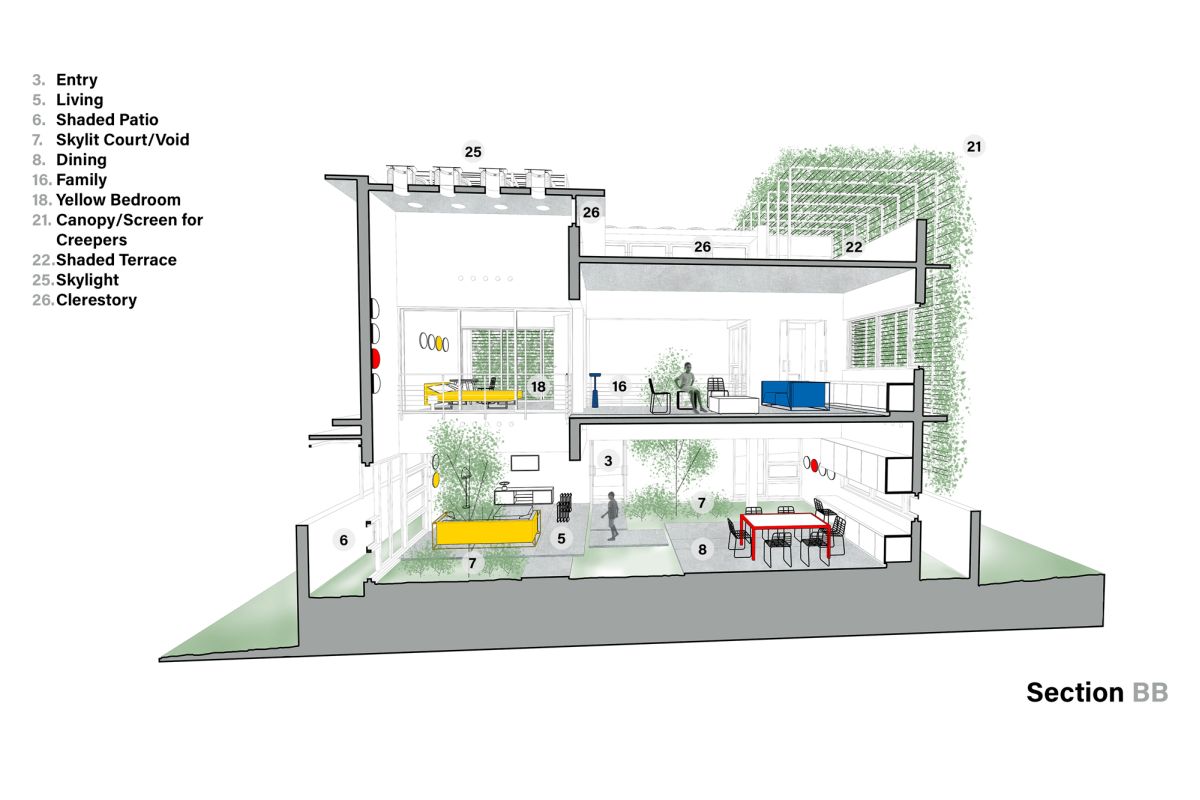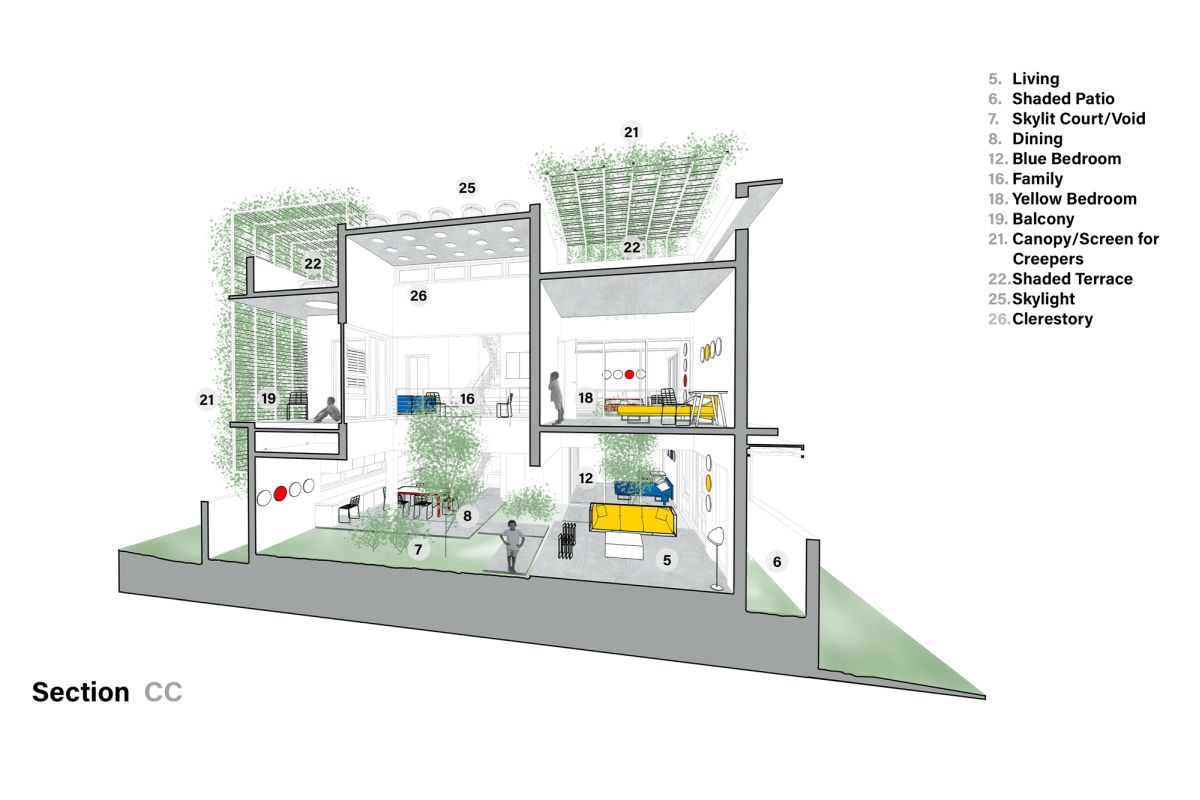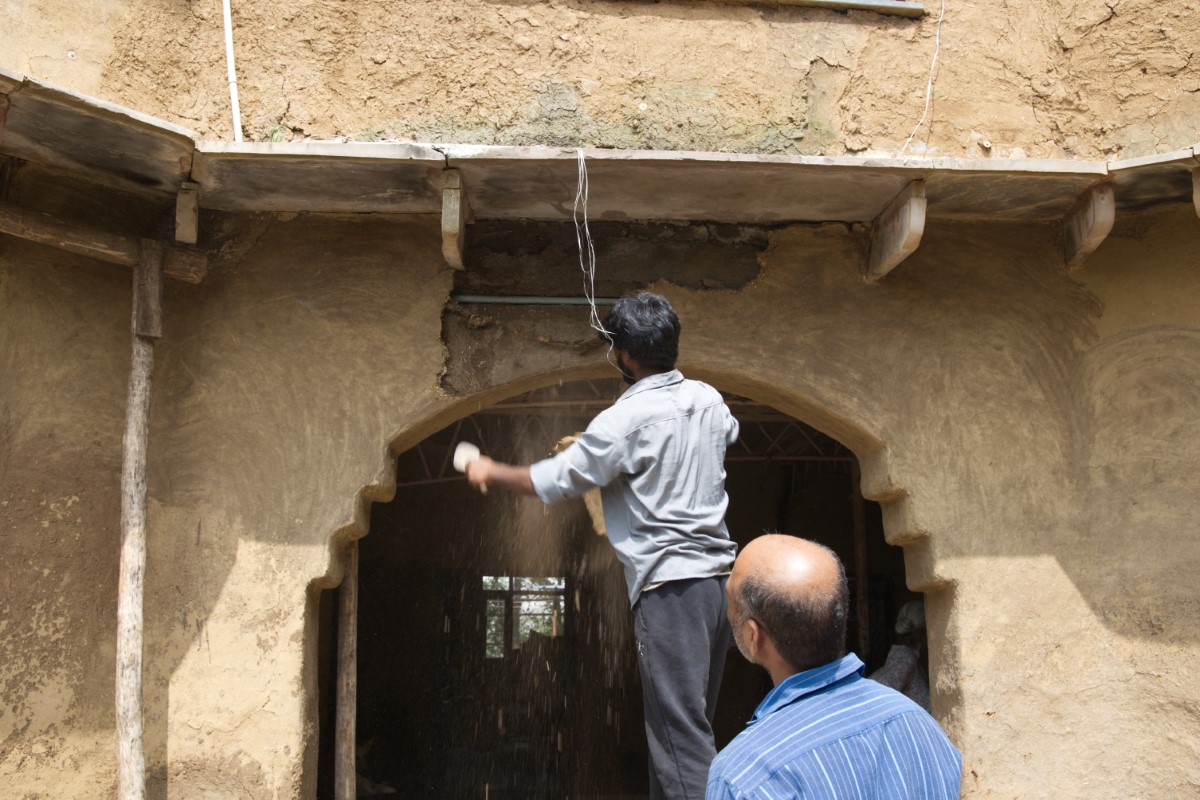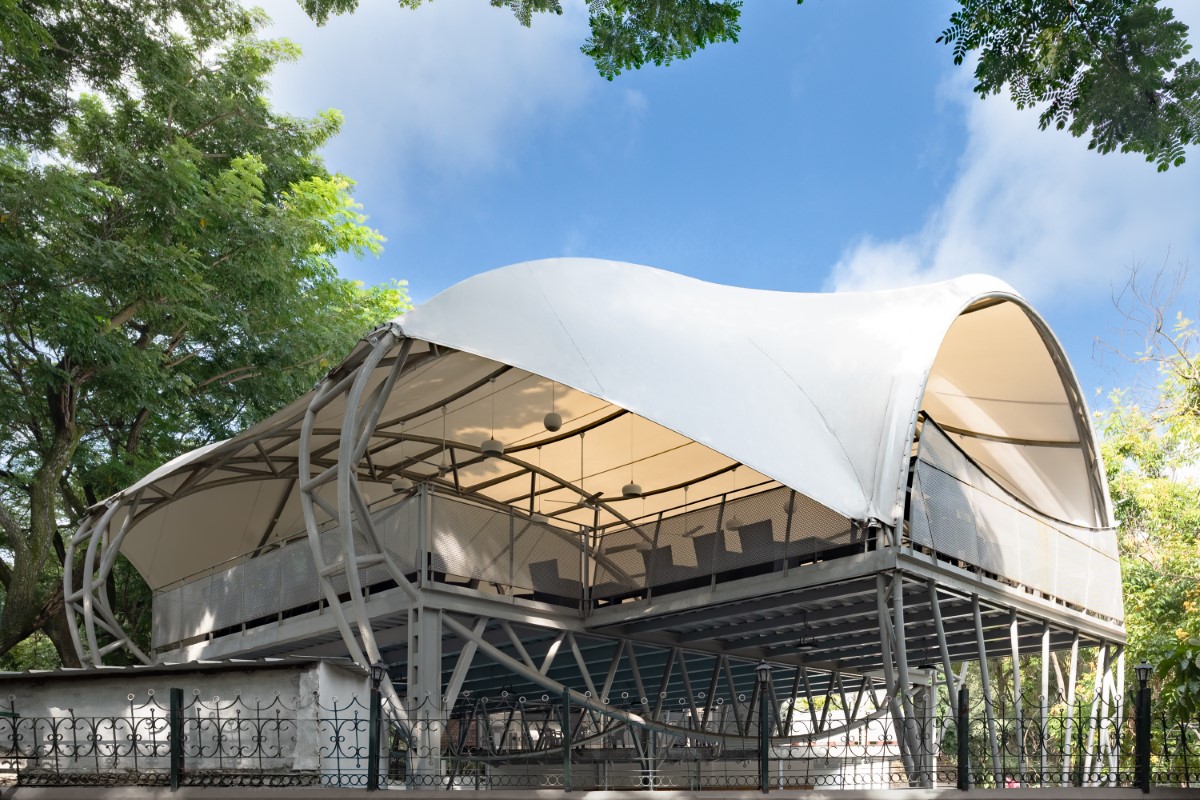The ‘House That Rains Light’ re-imagines dappled shade under the trees, informal kids play nooks, gardens with flowers, birds and butterflies, all lost to rapid urbanization, while being confined to a tight plot within a typical residential layout.
Owners, a young couple with their two kids, wanted a house that broke free from conventions, displaying a sense of individuality and character in the spaces that enveloped them, without being a burden on their simple ways of living. They also hoped the building would transcend the small footprint on site and become a multi-spatial/sensory experience for their kids to grow up in.
Stereotypes were broken throughout in design, and start right from the entry by avoiding the typical compound wall and gate towards the road. The shaded front yard becomes the parking area, a sit-out and a play area that spills out onto the relatively deserted road when the kids are in a mood for football or cricket, with their friends from the neighborhood, and a much larger space is needed. A variety of flowering creepers and climbing vegetables are grown onto three large frames fixed on the building becomes the extension of the much-needed garden on this tight plot while providing shade and privacy to the house.
The front door of this biophilic house opens into a spread-out volume that includes clearly defined spaces such as the living, dining, kitchen, a bedroom that can be closed when necessary and several landscape pockets in between them lit by a series of skylights from above. This open layout, which creates a sense of spaciousness in the otherwise small footprint of the building, becomes yet another playground for the kids. The kitchen, though kept private from the entry, extends into the dining to form a multipurpose counter and a study table for the couple who occasionally works from home. A shared toilet accessed from the wash area tucked under the stairs and the bedroom remains the only closed space on the ground floor.
The first floor has an open family space with two bedrooms, a common toilet and a balcony accessed directly from it. The skylit courts connect the volumes vertically and horizontally. Birds and butterflies flutter around the seasonal flowers on the green wall, abutting the large external openings of this floor that filter air and harsh sunlight as well as provide security and privacy. Waking up to the simple pleasures of bird songs and various colours, the inhabitants find each day a wonder.
Strategically positioned windows, considering the seasonal shift of wind, ensure cross ventilation throughout the year. The three skylit vertical volumes, the two landscape voids and the staircase shaft, that connects to the clerestory windows at the top, facilitates the stack effect and helps control the internal temperature during the hot summers of the tropical south.
Streaks of sunlight and moonlight that rain down the skylight change seasonally in length and intensity, making the interiors dynamic throughout the year. The large green walls, that define the façade, extend and cover one-third the roof to form shaded pockets on the terrace suitable for a siesta or an evening of barbecue and merriment with friends and family.
The materiality of the built structure creates a neutral backdrop for the burst of bright colours thematically positioned throughout the house by means of furniture, soft furnishings, decor and patterns in the flooring. A series of wall art made of candid photographs, positioned across the spaces, stand testament to the colourful lives of the unassuming inhabitants of the ‘House That Rains Light’.
Drawings –
Project Facts –
Project: House That Rains Light
Location: Thevakkal, Ernakulam, Kerala, India
Client: Manju N Jose, Dijo Jose and Family
Site: 209.87 sq m (5.18 ct)
Built up area: 274 sq m (2950 sqft)
Completion: 2020
Architects: LIJO.RENY.architects, Thrissur, Kerala
Lead Architects: Ar. RenyLijo and Ar. Lijo Jos
Interiors: LIJO.RENY.architects
Landscape Concept: LIJO.RENY.architects
Landscape Design: Plain Space Studio
Photographs: Praveen Mohandas
Consultants/Contractors
Structural: Keystone Engineers
Electrical and Plumbing: Sunil Kumar R.S and Biju T. B
Supervisor: Ashokan C.K
Civil: Ashokan C.K.
Flooring: Vinu K.K and Manesh M. R
Painting: Santhosh Kumar C.P
Door, Wardrobes and other Carpentry Work: 1000 kitchens and Surendran S.K
Lighting: SPACES, Kochi
Landscape: Ajish Devasahayam
Glass Supplier and Installation: Jaison K J
Steel Fabrication: LR Steels
Soft Furnishing: Masper and Spaces

